










Doug Kinsey, CFP®, CIMA®
Many people are concerned about the recent trend in inflation. While some of the causes of this are pandemic-related, we expect the overall rate of inflation to stay at a higher level than the trend over the last few decades. How should this be evaluated in the context of your retirement plan? We have some ideas:
A thoughtful retirement strategy will incorporate a reasonable future inflation rate in the projections. Make sure your plan does not rely on lower past inflation assumptions.
Review your investment portfolio and consider adding assets that are better suited to a higher inflationary environment. One of the primary purposes of investing in stocks and bonds is to achieve a rate of return that ensures you will maintain your buying power.
Review your budget and consider line items that may be more influenced by inflation, such as travel, new cars, food, entertainment, and health care.
Everyone has a personal inflation rate depending on how you plan to spend your money: not every product or service that you buy will experience the same level of inflation.
If you’ve never used a fiduciary financial planner, now would be a good time to do so. Artifex Financial Group is a fee-only financial planning firm that focuses on helping our clients navigate times like these. We’ve been helping people live successfully in retirement since 2007.


Doug Kinsey, CFP®, CIMA®

Managing Partner, Oakwood Office artifexfinancial.com
855-752-6644
doug.kinsey@artifexfinancial.com

2305 Far Hills Avenue, Suite 206 | Oakwood, OH | 45419
Staffing
JCC day at the Dragons, July 24
Field Day & lunch, July 31
228-8271
Jeff Noble • mridayton.com • info@mridayton.com






 By Marshall Weiss and Marc Katz
By Marshall Weiss and Marc Katz
Ohio Gov. James Rhodes described the site as the “finest community complex that I have seen in the state” when he spoke at the dedication of the Jewish Community Complex on Denlinger Road in Madison Township (now Trotwood), Sept. 10, 1978.

More than 500 guests heard the governor’s pronouncement in the gym of the complex’s Jesse Philips Building, the new home of the Dayton Jewish Center. Dayton hadn’t had a dedicated Jewish Community Center site since 1941. And back then, it had been a converted house in the East End Jewish neighborhood, inadequate for the needs of the growing Jewish community, which had moved northwest up Salem Avenue.
After decades of delays brought on by the World Wars and then emergency campaigns to support the fledgling Jewish state under attack,

Dayton now had a JCC to rival that of any large city.
And the state of Israel was glad to know it. “This dedication is an important occasion for Israel as well as the Dayton Jewish community,” wrote Asher Naim, Israel’s consul general in Philadelphia, whose office served Dayton. “Israel is strengthened whenever a Jewish community is strengthened.”

Continued on Page Four

The dedication of the Jesse Philips Building in 1978 was the culmination of the career of Jewish Community Council Exec. V.P. Robert Fitterman (L) shown here with Exec. Asst. Sylvia Siegle and Peter Wells, Fitterman’s successor

One place it’s good to live in the past is at the Growing Up Jewish in Miami Valley, Ohio Facebook group. It’s a project of Miami Valley Jewish Genealogy & History. I administer Miami Valley JG&H for the Jewish Federation, and I can’t tell you how much fun our 1,200-plus Facebook group members have reminiscing, posting and commenting on old photos, and reconnecting. Just go to Facebook, search for Growing Up Jewish in Miami Valley, Ohio, and join our group.

In the story above, you may notice what appear to be inconsistencies in the names of local Jewish organizations over the years. That’s because they changed their names now and then.

For example, the Jewish Federation became the Jewish Community Council in 1944 and returned to the name Jewish Federation in 1979. Over those years, JCC referred not to the Jewish Community Center, but to the council. And when the community center opened at the Jesse Philips Building in 1978, it was first called the Dayton Jewish Center.
amenities, freedom from cooking, cleaning, and running errands... all for one reasonable monthly fee.


Water’s still as warm as I remember...

Continued from Page Three
“It had something for everyone,” recalled Bob Bernstein, who was involved with the project from start to completion. “Old, young, Orthodox, Conservative, and Reform. It was terrific. It was a game-changer. It was a special place. We had a basketball league for adults. It was a place of involvement. It unified the community.”
No one there that day had put more work into bringing about the Jewish Community Complex — one piece at a time over a 30-year career — than Robert Fitterman.
The Jewish Federation, then called the Jewish Community Council, hired him in 1948 at age 35 as its executive director and to manage its two dozen employees.
With the dedication of the campus — which also comprised Covenant House Jewish nursing home, the largest outdoor pool in the county, a camp lodge and more than 75 acres of grounds — Fitterman retired, turning over the operations and management of its nearly 200 employees to Executive Director Peter H. Wells.
“We were able to service every age group,” Wells said, “from early childhood to seniors, from a daily senior luncheon program to recreational programs.”
The 65,000-square-foot Philips Building — which would be expanded to 78,000 square feet in the 1980s — was a place to make new friends, too.
“I met (my wife) Andi at the swimming pool,” Bill Franklin said. More than 60 years later, he remembered she was wearing a white bathing suit.
“I loved that building,” Bill Franklin said. “It was a second home.”
On the day of the soft opening in January 1978, a snowstorm closed most of the city. Federation Director of Special Services Harris Abrahams and Fitterman “did everything to clear the grounds so people could join the center,” Wells said.
“There were many in our community, sincere people, who as recently as two and three years ago didn’t think that the day was upon us when
we would see the realization of the Jesse Philips Building and a Jewish Center in it,” Fitterman noted in the site’s dedication book.
The drive for this JCC began in 1949, a year after Fitterman arrived in Dayton; the board voted to allocate part of its annual campaign funds each year toward a JCC building.
The opportunity to purchase the first 54 acres of land at the Denlinger Road site in Madison Township — then surrounded by farmland — came about in 1956 mainly with a large bequest from Nathan Sanders, along with the JCC building funds. Elmer Moyer selected the land.
The Federation opened its outdoor pool there in July 1961 and over the next few years added a camp lodge in the woods, baseball diamonds, and tennis courts.
Industrialist Jesse Philips chaired a capital funds drive in 1966 to build a JCC and a Jewish nursing home at the same time on the site. But with emergency funds needed for Israel with the 1967 Six-Day War, Federation leaders decided to build the nursing home first. Covenant House opened in 1973. Later that year, Israel’s Yom Kippur War became a more urgent priority than a center building.
Wells said he cultivated young leaders to become involved in the process. In 1975, the Federation launched its campaign to finally fund the JCC building, combined with reserves the Federation had built up.

“Jesse Philips had given the lead gift,” Wells said. “And he was also a wonderful, outstanding fundraiser for whatever he put his mind to. In all of this, the key player was Bill Leviton. He was chairman of the building committee and also the builder. He was not only the construction manager, he was the architect.”
Abrahams was the Federation’s point person who dealt with Leviton.
Mel Caplan, hired as the center’s director in 1977, remembered how the
Editor and Publisher Marshall Weiss

MWeiss@jfgd.net
937-610-1555
Contributors Marc Katz, Candace R. Kwiatek Rabbi Nochum Mangel Advertising Sales Executive Patty Caruso, plhc69@gmail.com

Proofreader Rachel Haug Gilbert
Billing Sheila Myers, SMyers@jfgd.net 937-610-1555

Observer Advisor Martin Gottlieb
Published by the Jewish Federation of Greater Dayton Dr. Heath Gilbert President Bruce Feldman Immediate Past Pres. Mary Rita Weissman Pres. Elect/VP, Personnel/Foundation Chair Beverly Louis Secretary Neil Friedman Treasurer Dan Sweeny VP, Resource Development Cathy Gardner CEO
The Dayton Jewish Observer, Vol. 26, No. 11. The Dayton Jewish Observer is published monthly by the Jewish Federation of Greater Dayton, a nonprofit corporation, 525 Versailles Dr., Dayton, OH 45459.
Views expressed by columnists, in readers’ letters, and in opinion pieces do not necessarily reflect the opinion of staff or layleaders of The Dayton Jewish Observer or the Jewish Federation of Greater Dayton. Acceptance of advertising neither endorses advertisers nor guarantees kashrut.
The Dayton Jewish Observer Mission Statement
To support, strengthen and champion the Dayton Jewish community by providing a forum and resource for Jewish community interests.
Goals
• To encourage affiliation, involvement and communication.
• To provide announcements, news, opinions and analysis of local, national and international activities and issues affecting Jews and the Jewish community.


• To build community across institutional, organizational and denominational lines.
• To advance causes important to the strength of our Jewish community including support of Federation agencies, its annual campaign, synagogue affiliation, Jewish education and participation in Jewish and general community affairs.
• To provide an historic record of Dayton Jewish life.
The Dayton Jewish Observer
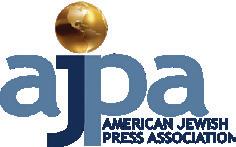

Jesse Philips Building created a social environment that built friendships — and connections to the Jewish community. It was a given that children and teenagers would benefit from the center’s amenities, Caplan said, but he noted that senior adults and their adult children benefitted even more.
“You’d go to the lobby and people would just hang around after they played or did what they did. They’d sit around and talk,” Caplan said. “People appreciated what was going on, especially senior adults, who all of a sudden had a place to go, had a reason for doing things, for volunteering.”
Racquetball and tennis were big draws, and the center kept waiting lists for both, except on Shabbat: the center was opened on Saturday afternoons but didn’t take phone calls for reservations.
Chilling at the pool
When asked to share their JCC memories, members of the Growing Up Jewish in Miami Valley, Ohio Facebook group mentioned the outdoor pool more than anything else.
“The high dive, multi-color concrete umbrella structures, pizza bagels, cheap ice cream in mini cartons, the disappointment of the rest period and waiting it out, the entrance where your membership card was being held, the elderly playing cards and dominoes and reading their Yiddish newspapers” are what
Aryeh Dori recalled.
“I remember (being) dripping wet, running down the ramp to the snack bar or bathroom, the mushroom-looking shade pillars, the scary diving board section, the tall fences, and the camp up the hill. I remember pizza bagels and purple and red chewy round candies,” Amy Haynes said.
“I remember making some of the best friends and memories there, in the section where all the BBYOers and other teens hung out,” Darryl Weiss said. “My Mom used to refer to it as ‘muscle beach.’”
And the water was freezing until the end of the summer; the pool was unheated.
Melinda Doner recalled the camp song, “Camp Jay See, our hats off to thee,” and that “putting on plays in the lodge was so much fun.”
One person remembered pretending to need a swim rescue when he was a boy so he could be saved by a cute lifeguard.
Another said she ate lots of ice cream bars as a girl just to catch a glimpse of the handsome boy working at the snack bar. The boy was Alan Brown, son of Louis Brown, who served as Jewish Center director from 1968 to 1977.
“He was my first date at 14 and he was 15. We dated 10 years and got married in 1979 and we’re still going strong,” said the girl with the ice cream bars,
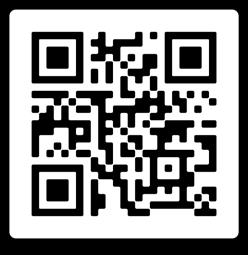


Terry Coyne, SIOR, CCIM & Derek Lichtfuss
“We would never charge for anyone who couldn’t afford it,” Caplan said. “And we wanted to help integrate them,” though he added that they didn’t use the facilities all that much.
“They were older. Some of them used our senior adult services. They basically stuck together in the new apartment building, Covenant Manor, on our campus. The other thing the center did was we had English as a Second Language classes. We did that for maybe four or five years.”
Cathy Brown.
When Louis Brown oversaw JCC programming in the years before a building, Marilyn Serelson was membership secretary, Marlene Carne handled the programming, and Lynda A. Cohen ran the preschool. Ben Campbell, a teacher during the school year, oversaw the pool.
Dayton’s JCC had first opened in 1922 to help Americanize Jewish immigrants from Eastern Europe. Seventy years later, it would return to its roots for a time. Between 1989 and 1993, when the Jewish Federation resettled nearly 200 Jews in Dayton from the former Soviet Union, the JCC provided each with a free membership.
Two decades after the Jesse Philips Building was dedicated, nearly half of the identified Jewish population of the Miami Valley lived in the suburbs south of Dayton.
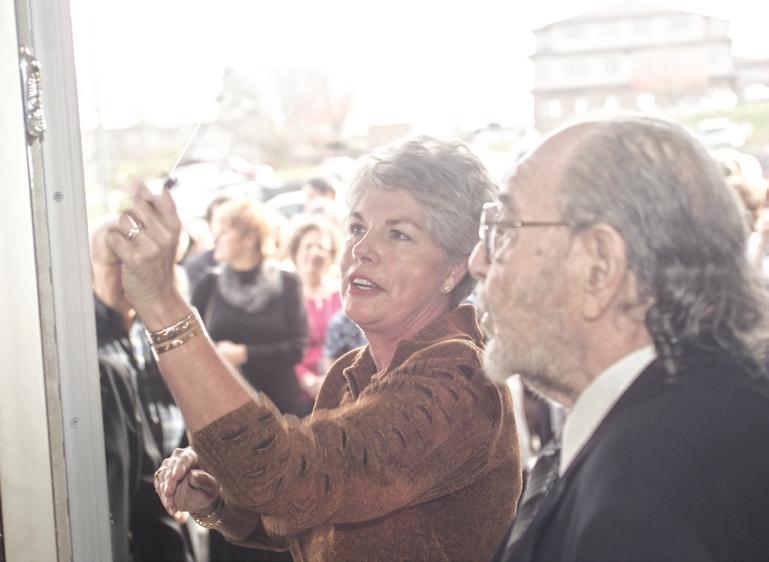
The identified population of the Dayton area’s Jewish community had also dropped from its peak of 7,200 in the early 1970s to about 5,500.

As the population shift southward gained momentum, the Federation opened its JCC South site for programming in 1992 at a storefront on Whipp Road in Washington Township.
This was the Federation’s first foothold toward opening the Boonshoft Center for Jewish Culture and Education on 14 acres of land at Loop Road and Versailles Drive in Centerville in 2002. Jewish Federation Property Manager
Continued on Page Six
The state of Ohio is an affordable and well-located option for developers looking to build state-of-the-art warehouse and distribution centers, with the average industrial land sale price at $52,357/acre, less than half the national average price of $117,951/acre. Terry and Derek are commercial real estate brokers with an extensive network and local knowledge.
— Susie Katz with her husband, Eddie
For most of her adult life, Susie Katz has been a passionate fundraiser for Jewish organizations in our community. Yet, none of them has seemed as compelling as the current Jewish Cemeteries of Greater Dayton campaign. “We owe this effort to those who are buried in our cemeteries,” said Susie.
After learning about all of the research and data that went into creating this independent organization, she soon became one of the campaign’s earliest donors. “I know we were approaching this campaign correctly,” Susie remarked. “There will be a day when our congregations will not be able to support their cemeteries by themselves. We need to be prepared and feel the urgency, even if it’s not today.”
Reflecting on her family and friends who are buried in all of Dayton’s Jewish cemeteries, Susie commented that “protecting these beautiful surroundings is important to me. We can’t miss our opportunity to care for them.”
Jewish Cemeteries of Greater Dayton is an endowment organization created to maintain our three Jewish cemeteries in perpetuity. Please join us as we strive to maintain the sanctity, care, and integrity of these sacred burial grounds.

Continued from Page Five
Roger Apple, who oversaw construction of the 24,312 square-foot building, continues on with the Federation, these days as operations and security director.
When the Federation raised funds for the Boonshoft CJCE, it also attempted to raise funds for an endowment to maintain its north facility.
But with state-of-the-art fitness and recreation centers opening in numerous municipalities across the Miami Valley, JCC memberships dropping precipitously — and members of the Jewish community reluctant to support an endowment fund for the north facility — the Federation sold the Philips Building and much of the campus to United Theological Seminary in 2005.
The JCC would then be headquartered at the Boonshoft CJCE and would present programs across the region, the model it follows today.
From its opening day nearly 20 years ago, on Sept. 2, 2002, the Boonshoft CJCE’s anchor has been its JCC Early Childhood Program, with Audrey MacKenzie in charge for most of those years. The JCC is also known
for its Film Fest, Cultural Arts & Book Series, and children’s theatre at various venues across the Miami Valley, for Camp Shalom at Temple Beth Or, and for coordinating community Jewish holiday celebrations.
“My formative years were at my local JCC, and I love everything we’re doing now and planning for the future,” said Jewish Federation CEO Cathy Gardner. The Federation has operated Dayton’s JCC since it first opened a century ago.
With the retirement of JCC Director Jane Hochstein, Marc Jacob returned to the JCC earlier this year to serve as its senior director. “I’ve been doing this since ‘94,” he said of his JCC work. Meryl Hattenbach is the JCC’s program manager and Helen Jones is its program administrator.

For the coming year, Marc looks to add niche programming to resonate with area Jews and non-Jews. He’s starting a group for Baby Boomers in August.
“We’re looking for pockets of programmatic areas that have fallen through the cracks,” he said. “We’re looking at what role we can play in the general community through partnerships.”
The JCC will celebrate its centennial with a day at the Dayton Dragons, Sunday, July 24 at 1:05 p.m.
“People are itching to get back with each other and have that place they can call a second home. And that’s what the JCC has always been to me: a second home.”
Two small boxes of documents tell some of the story of Dayton’s Jewish community on Sept. 10, 1978: dedication day for the Jesse Philips Building and the Jewish Community Complex.
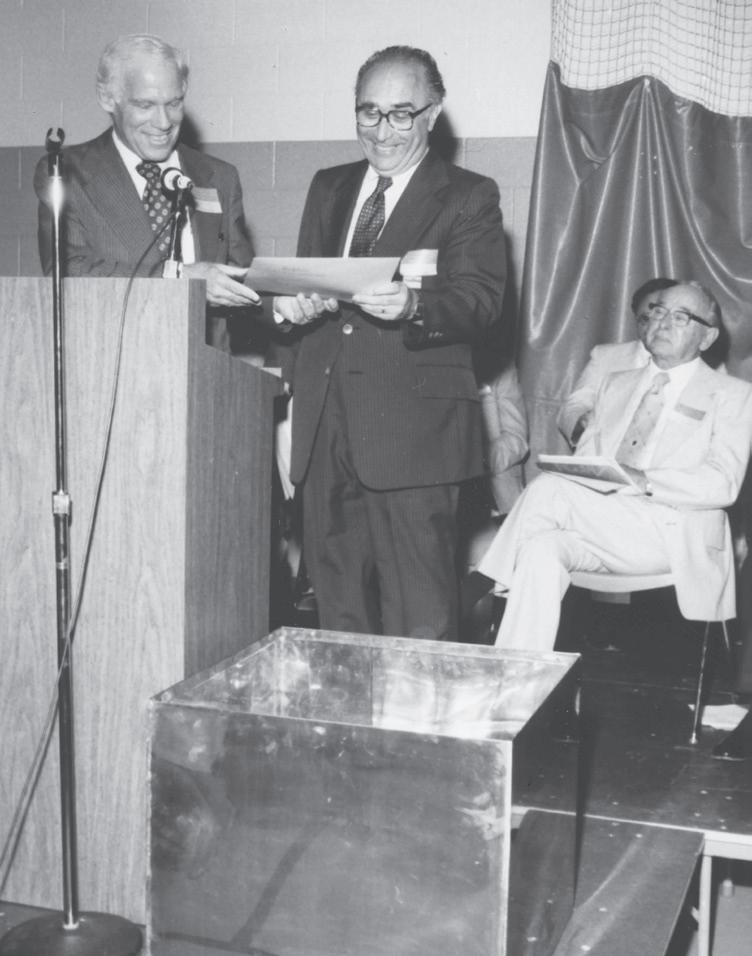
They hold the contents of the Jewish community time capsule, which had been sealed into the brick building on Denlinger Road.
After United Theological Seminary purchased the building, contractors found the capsule during renovations.
The contents are now part of the Jewish Federation’s archival materials at Wright State University Special Collections and Archives.
The capsule was to be opened 50 years after the dedication, in September 2028. But with only six years to go, the JCC’s centennial seems a good time to take a peek.
“Every Jewish organization put something into the time capsule,” said Peter Wells, the Federation’s executive director at the time.
Buried at the bottom of one box is a cassette tape, heavily taped shut, left by Hadassah.
There’s a white wrinkled toddler’s T-shirt with a logo for the DJC (Dayton Jewish Center) Happy Hollow Camp, a paper coin roll for dimes — “Save dimes to help Hadassah” — and that day’s edition of the Dayton Daily News (wider and longer than today’s version, with the lead headline “Carter, Brezhnev to talk later in ‘78”).
There are also a few black-and-white photos, some of them taken during the ceremonies prior to sealing the capsule up.
Documents from synagogues still with us (Beth Abraham, Beth Jacob, and Temple Israel) are represented, as well as documents from a synagogue – Shomrei Emunah – that has since disbanded.
Temple Beth Or and Chabad had not yet been established in Dayton. A legal pad listing the typed names of what was believed to be the Jewish community at the time reached 80 pages with 30 names per page.
At first glance, that doesn’t seem to establish the entire Jewish community of the time. On closer inspection, only male names were included. Even female names of married couples are not listed.
There is a Jerusalem Post and a history of the weekly Dayton Jewish Chronicle
Temple Israel Men’s Club listed 207 members, and Weprin AZA youth group listed more than 100 members. United Synagogue Youth at Beth Abraham posted a vibrant schedule.
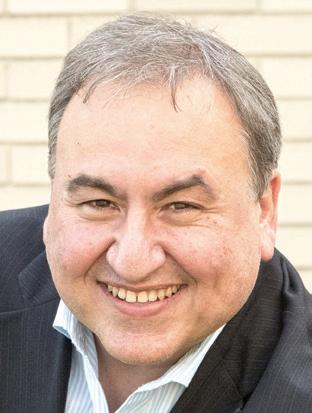
Leonard Spialter left a trove of documents concerning Beth Abraham’s history, and Hy Blum wrote a history of Beth Jacob.
Jewish War Veterans Post 587 left a copy of its April 11, 1948
charter certificate.
Eating in 1978 didn’t come at a heavy cost, especially if the meal wasn’t kosher. Temple Israel Sisterhood offered a “kosher-style” corned beef sandwich with kaiser roll, a half pint of cole slaw, a pickle, and dessert at $5 a box, delivered; $9 for two.
The Sidney Kusworm B’nai B’rith Lodge held a spring steak dinner with local radio host Lou Emm at The Tropics, and later a free steak dinner at the same location to hear an in-depth report on the new JCC building.
— Marc Katz‘The cemeteries are the history of my community.’


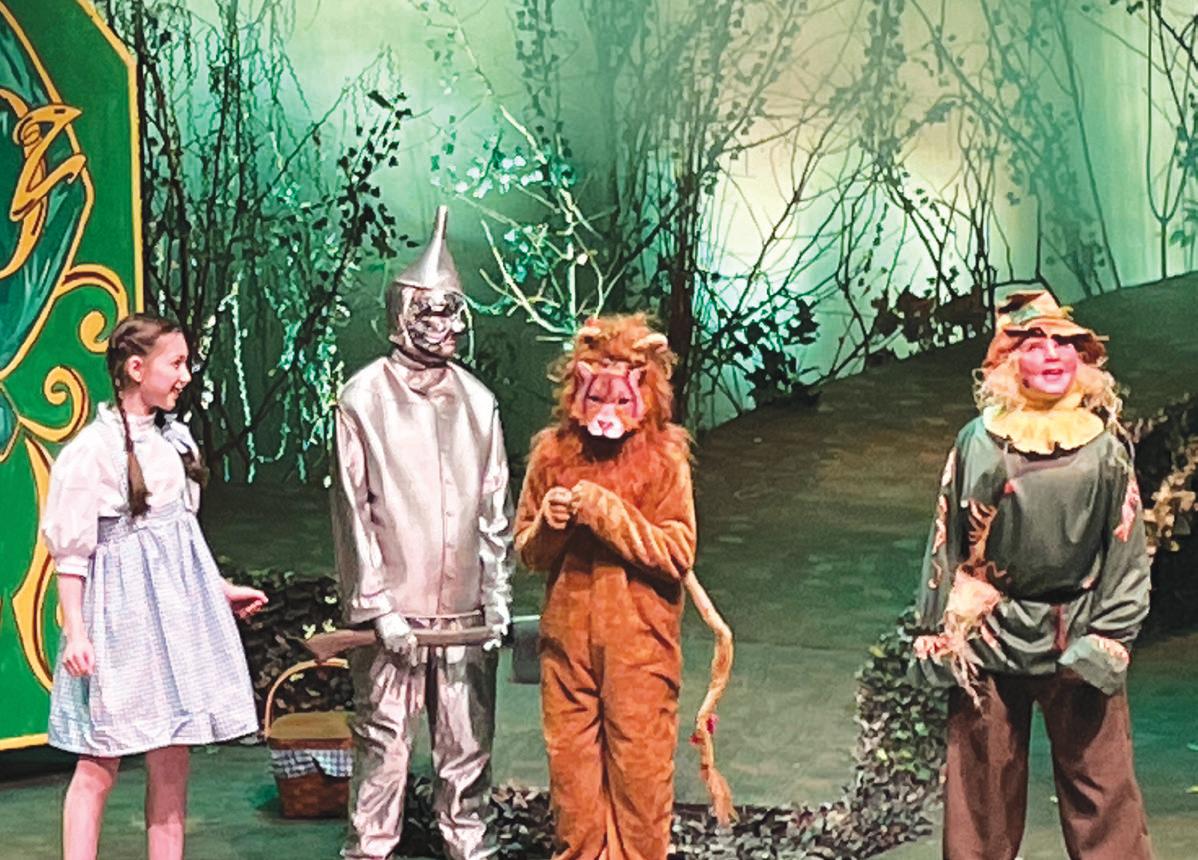



Kettering Health Dayton
Louis S. Cantor, Rose Sorokin Cantor, Samuel L. Cantor and Lena Cantor Temple Israel and Jewish Federation of Greater Dayton, Inc. Fund
Fort Washington Investment Advisors
Groundskeeper Landscape Group
The Ohlmann Group
Jewish Federation of Greater Dayton Rieck Services
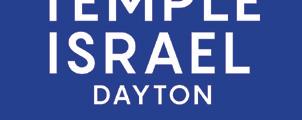



Burke Orthodontics • Economy Linen & Towel
Michael H. Halasz, DDS

Brady Ware & Company • Buck Run Doors Evans Bakery • Management Recruiters of Dayton
Rabbi Karen Bodney-Halasz and Scott Halasz
John and Elaine Gaglione
The Goldenberg Family
Wendy and Jeff Horwitz
Joan and Charlie Knoll
Stuart Rose
Andy and Sue Snow
Tom and Juli Bainbridge
Mitchell and Sara Faust
Jon, Heidi and Julia Freeman
Alan and Julie Halpern
The Sobo family
Amid controversies concerning the Vatican’s Holocaust-era record, Pope Francis and the head of Israel’s state museum on the Holocaust, Yad Vashem, met for a first-of-its-kind talk.
Yad Vashem Director Dani Dayan met with the pope June 9 at his office in the Vatican. During their 30-minute talk, they spoke about ways to “bolster collaborative activities” in areas of “Holocaust remembrance, education and documentation, and to discuss efforts to fight antisemitism and racism worldwide,” Dayan’s office wrote in a statement.
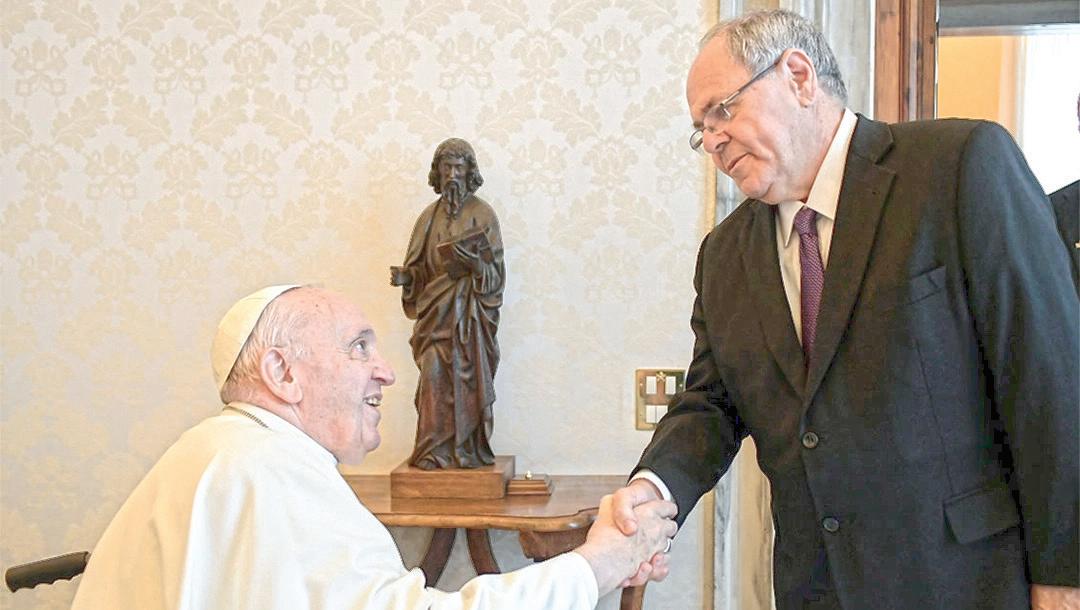
Dayan thanked the pope for his 2020 decision to open the Vatican’s archives related to the wartime Pope Pius XII, whose critics say did too little to intervene on behalf of the 6 million Jews that the Nazis murdered in the Holocaust.
But they did not discuss the Holocaust-related controversies that for years have been straining Jewish-Catholic relations, Dayan told the JTA. Instead, Dayan focused on areas of consensus and on strengthening ties with the Vatican, he said.
One of these controversies is the ongoing beatification of Pius XII. Another concerns other archives that Holocaust researchers say are still inaccessible to them. And another is centered on the debate on whether the Vatican should acknowledge and provide more details about what Pius XII did during the Holocaust.
“You don’t sit with the pope on specific files. You sit with the pope on the big issues, on the principles, on the
headlines,” Dayan, a former consul general of the State of Israel in New York who became the head of Yad Vashem last year, said when asked whether he brought up any of these issues during the meeting.
Asked whether he had made any requests, Dayan replied: “No need to make requests — for sure, not demands — when all our requests are answered diligently. We are completely satisfied with the attitudes of the pope personally and the Catholic Church, the Vatican.”
Not all Holocaust historians share Dayan’s satisfaction.
Certainly not David Kertzer, a professor of Italian Studies at Brown University whose 2014 book on the pope’s ties to fascism won a Pulitzer Prize.
Kertzer published a new book in June titled The Pope at War: The Secret History of Pius XII, Mussolini, and Hitler based on archives opened in 2020 by the Vatican.
He said that he hopes the pope will consider “changing the course of the Vatican with respect to the continual denial of the role of the church in the demonization of the Jews that helped to make the Holocaust possible. And also to perhaps reconsider whether they really want to make a saint of Pius XII.”
A 1998 commission set up by the Vatican concluded that the centuries during which the Catholic Church espoused anti-Jewish sentiments as official policy did not lead Continued on Page 23
David KertzerThank you to our lead sponsors for making the event a success!Pope Francis receives Yad Vashem Director Dani Dayan at the Vatican, June 9
Dayan focused on areas of consensus and on strengthening ties with theBrown Univ.
BERLIN — The German government’s annual report on developments in extremism notes a nearly 29 percent increase in antisemitic crimes in 2021 over the previous year.
The report, released June 9 by the Federal Office for the Protection of the Constitution, is based on statistics reported in May by the Federal Criminal Police Office, Germany’s equivalent to the FBI.
In all, 3,027 antisemitic incidents were registered last year, up from 2,351 in 2020. The vast majority were related to right-wing extremism, but Islamic extremist antisemitism is also up, with 122 reported incidents compared to 26 the year before.
Most reported crimes relate to illegal statements and publications — Holocaust denial and other forms of hate speech are outlawed in Germany — including on the internet. But attacks on people and synagogues were also registered.

As usual, the number of incidents rose when tensions between Israel and its Palestinian neighbors were highest — in May 2021.
The most worrying trends come in the form of burgeoning conspiracy theories relating Jews to the coronavirus pandemic and measures to curb it, leaders and watchdogs said.
“Some protesters against Germany’s response to the pandemic “are blaming imaginary Jews for profiting from it and at the same time attaching Jewish stars” to their clothes, as if to say they are the new Jews, said Benjamin Steinitz, director of the Berlin-based Research and Information Center on Anti-Semitism Berlin, or RIAS. “Both antisemitic conspiracy myths and Shoah trivialization have been normalized. This is a worrisome development.”
He added that a “dark field of antisemitic incidents” goes unreported in government statistics. “We have to assume that… recorded incidents are only the tip of the iceberg,” he told JTA.
The Berlin-based Amadeu Antonio Foundation released a report of its own June 8, raising the alarm about developments in antisemitism related to the Ukraine war (including comparing Putin to Hitler and Ukraine with the Palestinian cause); resentment at the rescue of Holocaust survivors from Ukraine; and glorification of terror attacks against Israeli civilians.
These developments pose “an acute threat to Jewish life in Germany,” according to the foundation, which focuses on combating xenophobia and antisemitism.
Meanwhile, more than 60 percent of respondents to a recent survey agreed that antisemitism in Germany has increased sharply. Released in May by the American Jewish Committee office in Berlin, the study — commissioned to the Allensbach Institute for Public Opinion Research — also showed that Muslims and supporters of the right-wing populist Alternative for Germany party are most likely to harbor antisemitic prejudices. Right-wing extremist motivation continued to far outstrip any other categories in the government study. Out of 3,027 cases, 2,552 were attributed to neo-Nazi ideology. Of those, 64 were violent crimes, including 51 cases of physical injury.
Josef Schuster, head of the Central Council of Jews in Germany, told ZDFheute TV news that the report on extremism — from left to right — “shows that Jewish life in Germany continues to be under massive threat. And the greatest danger comes from the far-right scene.”
STRONGER. CONFIDENT. INDEPENDENT.
When life delivers health challenges, the comfort your own home provides becomes even more important. Caring and professional support while recovering at home helps build strength and confidence in familiar surroundings. The Bethany Village Home Health Care team also supports family caregivers while loved ones recover at home. Dealing with health changes can be a challenge, but with the proper support, we can help you recover in the comfort of your home.

The most worrying trends come in the form of burgeoning conspiracy theories relating Jews to the coronavirus pandemic
GONDAR, Ethiopia — It was love at first sight for Wesom Mellesse when his wife stepped into his metal shop 17 years ago.
“Her dad took her into my shop because he needed me to fix their plow and when I saw her, we understood that we felt something. We fell in love. I asked her father if we could marry,” said Mellese, a 38-yearold father of three who now works as a carpenter in Gondar, a northern city that is Ethiopia’s sixth largest.
His choice in marriage was even more fateful than he realized at the time.
Because of it, Mellese became ineligible to join his father, sister and brother when they immigrated to Israel in 2007 along with other Falash Mura — Ethiopians whose Jewish ancestors converted to Christianity.
Mellese’s story is typical of cases that have turned the Falash Mura immigration into a painful and protracted saga despite multiple Israeli governments’ pledges since 1992 to resolve it.
Nearly a dozen times, Israeli governments have committed to admitting groups of Falash Mura, under pressure to allow them to reunite with family members in Israel. And just as often, delays and stringent rules have fueled additional family separations, creating a self-perpetuating cycle.
From the start, Israel committed to admitting only Falash Mura whose parents or children live in Israel. Their spouses and children can come along — but only if the children have not married or had children. The rules are meant to prevent large numbers of non-Jews or people not considered Jewish by Israel’s Orthodox Chief Rabbinate to immigrate to Israel.
Some Falash Mura have put marriage on hold for years to remain eligible for immigration to Israel. Others, such as Mellese, have gone forward with their own lives, only to be shut out of a dream they had long nurtured.
“It’s a sad story,” Mellese, a gangly man with a deep voice, told the JTA in May at a café overlooking
Gondar’s many hills and muddy-banked lake. The local Falash Mura community was preparing to send off more than 300 members who had successfully met Israel’s immigration requirements.
The separation of Falash Mura families, which is connected to Israel’s desire to limit immigration by non-Jews, has perpetuated the issue, which increasingly is dividing Israeli society and especially the country’s minority of about 160,000 Israelis with Ethiopian roots.

To understand how, “one must return only about 2,600 years in time,” according to Micha Feldmann, the first envoy to Ethiopia by the Jewish Agency for Israel, a semi-governmental body that handles immigration to the Jewish state by Jews and their relatives, or aliyah.
That is when Ethiopian Jews believe their unique community was established, pursuing its own isolated trajectory.
Changes were slow and far between for that community, known as Beta Israel. That is, until the 1800s, when several hundreds of Beta Israel families, primarily in the country’s north, were forcibly converted to Christianity as it took hold as the country’s predominant faith.
The converts, known as Falash Mura, kept some Jewish customs. But they also married non-Jews, and many had abandoned the custom of circumcision. In effect, they had largely split off from Beta Israel, where intermarriage was shunned and
traditions strictly observed.
In 1991, almost all Ethiopia’s 14,000-odd remaining Beta Israel Jews were airlifted to Israel.
But Jewish presence remained.
In Gondar, where most Falash Mura live, members of that minority came together to preserve their heritage, including at what is now known as the Hatikvah Synagogue.
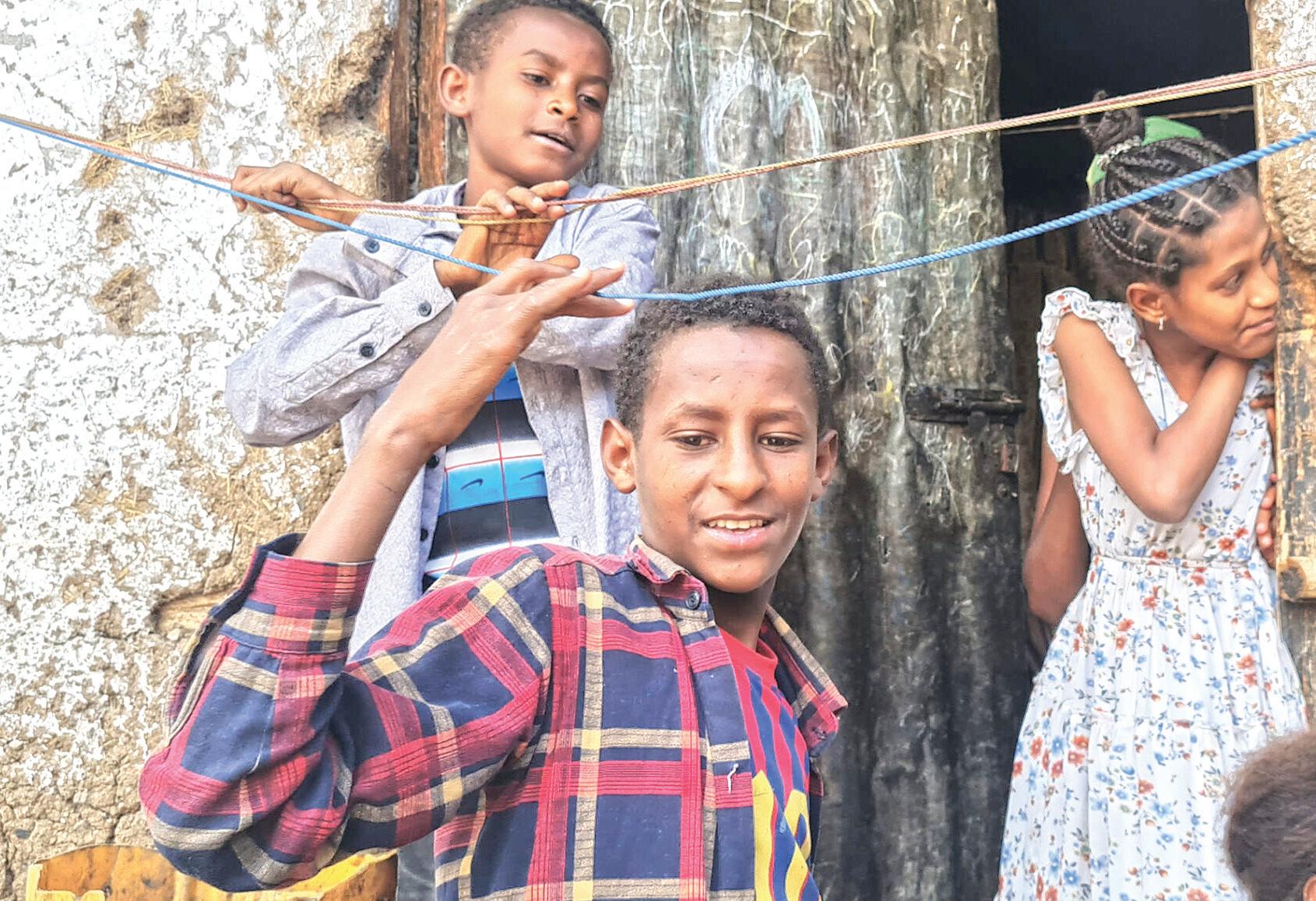
Built with money from Jewish-American donors and the Jewish Agency, it’s a large corrugated-metal shed with an elevated watchtower on its southern end. The lyrics of Hatikvah, Israel’s national anthem, which gave the synagogue its name, are hand-written on the northern wall, the one facing Jerusalem, and the Torah ark. Hatikvah means the hope in Hebrew.
Many of the community members know the song by heart. Many members of the community say they eat only kosher food. Local members slaughter chickens for meat in accordance with the principles of halacha, Jewish law, two community members told JTA.
Dozens and sometimes hundreds of Falash Mura gather here for morning prayers, which take place according to rituals present in traditional synagogues the world over. The men and women sit in separate sections, with a hanging curtain that is dropped down during some prayers. The women ululate softly when the Torah is carried in front of them. The men kiss the Torah with their prayer shawls. Those who don’t, lift their right-hand pinkies and point them at the scroll.
Back in Israel, Beta Israel Jews with Falash Mura relatives in Ethiopia mounted the first campaign in 1992 to let their relatives in. Activists for this cause unfurled a banner reading: “I want my mother, I want my father” at a rally where politicians responsible for the 1991 airlift, known as Operation Solomon, expected to bask in the community’s gratitude, Feldmann, the Jewish Agency envoy, recalled.
This protest led to a decision by then-Prime Min-
ister Yitzhak Rabin to allow in about 2,000 Falash Mura. This effort was the first major exception to Israel’s Law of Return for Jews and their relatives, under which Beta Israel Jews came. Falash Mura do not qualify under the law. They arrive under a government decree on the condition they undergo an Orthodox conversion to Judaism.
The Falash Mura who came in 1992 had left behind firstdegree relatives who they demanded be let into Israel. Separately, more Beta Israel immigrants came forward and asked that their Falash Mura relatives also be allowed to immigrate.
This set the stage for successions of rallies over the past 30 years, some of them violent, demanding reunification for Falash Mura.
The rallies and other efforts proved effective: Since 1992, the Israeli government has passed at least 11 resolutions permitting entry by Falash Mura. Often delayed in their application, each new resolution announced a round of immigration by a few thousand Falash Mura, but with stipulations that ended up separating families — thus fueling the next wave of protests.
So far, at least 25,000 Falash Mura (some Ethiopian Jews believe the actual number is higher) have trickled into Israel, out of 95,000 who have immigrated from Ethiopia in total. The number of Falash Mura who meet the government’s current requirements is estimated at 10,000, but the figure is fluid. In 2007, the government brought in 7,000 Falash Mura whom it called the last.
In 2020, the government and the Jewish Agency launched another wave of 3,000 newcomers under an operation codenamed Zur Israel. Delayed by Covid and clashes with rebels in Ethiopia, the operation has brought so far about 500 Falash Mura to Israel, most recently in two flights last month with 300 immigrants.
Aceremony at Hatikvah synagogue to send them off was attended by 1,000 people dressed mostly in white and ended with the singing of
Hatikvah. The service was led by local young men who have been studying Judaism online with Menachem Waldman, the Israeli government’s person in charge of issues related to converting Ethiopians.

Some of the new immigrants, including Kefale Tayachew Damtie, a father of six who flew to Israel with his entire nuclear family to be reunited with his mother, have been waiting for more than 20 years. He had forbidden his eldest three children, ages 16 to 23, to marry in Ethiopia — where the average age for marriage is 16 — so that they remained eligible to immigrate.
Others went further to ensure continued eligibility. Chalachew Teshager Gerem, a 35-year-old computer science lecturer at Gondar University, chose to remain unmarried even without a parental veto on marriage, he told JTA.
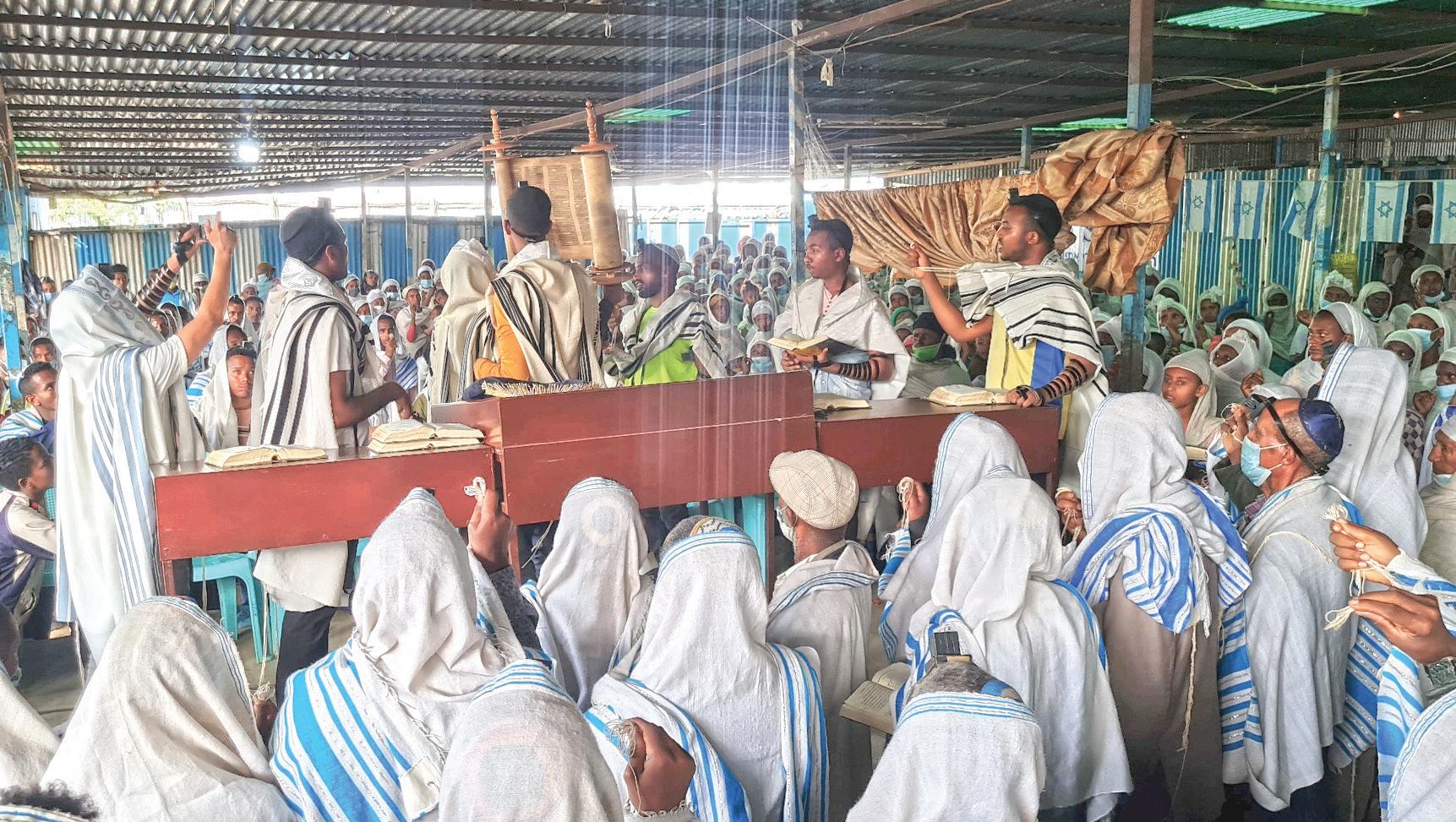
Some have lied during their immigration process, according to Shay Felber, the head of the Jewish Agency’s aliyah department. They omitted wives and children whom they left behind in the hope of getting them on a plane to Israel under some future government resolution. In the meantime, they send money to feed their families in Ethiopia, where the average monthly wage is $172.
The Falash Mura put their lives on hold in additional ways in connection with the awaited plane ticket to Israel. Teshager Gerem’s father, Teshager Gerem Bogal, moved his family from their village to Gondar nine years ago to prepare for the move to Israel.

In their native village, the family of nine had a good income and spacious accommodations. Gondar was a significant downgrade: Before they left for Israel, the family shared a single dirt-floor room with no running water.
Now, all of the immigrants will live for two years at a government absorption center in Be’er Sheva where they will be taught Hebrew and undergo conversion.
Both that family and that of Kefale Tayachew Damtie say they are treated differently in Ethiopian society because they are considered Jewish. (Damtie is sure his landlord had hiked

the rent for that reason, he said.)
With the money from selling their farm, the Gerem family was able to afford to send all their children, ages 17 to 35, to high school and university to prepare them to better integrate into Israel’s modern society, the father of the family said at his home during a visit that the Jewish Agency’s staff of 20 in Ethiopia organized for journalists.
The integration of all Ethiopians has been slow, painful but ultimately successful, Feldmann said.
“I was naïve. I thought it would take a generation. Now I think it will take several,” said Feldmann, who first came to Ethiopia almost 40 years ago. “But it’s happening.”
Asthe ranks of the Falash Mura grew, Beta Israel and other Jews began charging that people applying for immigration from Ethiopia have no Jewish heritage. Some of the newcomers were “not Falash Mura at all. They are complete and utter Christians, who are changing the character of our community, and are here just
to get out of Africa,” one critic, Avraham Yerdai, a former vice chair of the Union of Ethiopian Jews, the community’s main umbrella group, told JTA.
The group’s current leadership supports immigration by Falash Mura. But Yerdai and other critics of the current wave of immigrants are worried that others are taking advantage of the open door.
“The promoters of immigration achieve their goals through allegations of racism. And that’s effective these days. So non-Jews are coming now Continued on Page 12
Continued from Page 11 to Israel because they’re Black,” said Ayanau Fareda Sanvatu, an Ethiopian-born journalist and writer. Last year he helped Yerdai petition the Israeli Supreme Court to stop the Falash Mura immigration. The court dismissed the petition, citing jurisdiction issues.
Some promoters of Falash Mura immigration say that they see racism by White Israelis as a major reason for the limitations of immigration from Ethiopia.
“This is pure racism,” Avraham Negosa, a Likud lawmaker who was born in Ethiopia, said in a 2016 speech about the government’s attitude. “There’s money to bring Jews from America and Europe. But not for Ethiopians.”
Even before the Black Lives Matter movement moment of 2020, the racism allegations regarding the treatment of the Falash Mura touched a raw nerve in Israeli society, which has seen several scandals involving the treatment of Ethiopian Jews.
The exclusion of Ethiopian students from statefunded haredi and other schools has been a recurrent phenomenon. Another has been medical authorities’ refusal to use blood donations from Ethiopians until this practice was banned in 2017, following several street protests.
The 2019 slaying of Salomon Teka, an 18-year-old Ethiopia-born man, by a police officer resulted in the most violent wave of protests by Ethiopians so far. To many, he is a symbol of over policing in neighborhoods with many immigrants from Ethiopia. The officer, who claims he felt Teka behaved violently, is standing trial for manslaughter.
Sanvatu acknowledges that there are expressions of racism against Israelis of Ethiopian origin. But, he said, “the racism issue is unrelated to the Falash Mura one, which is controversial especially among Israelis of Ethiopian descent.”
Israeli politicians from that community, including Absorption Minister Pnina Tamano-Shata, “are benefiting from the arrival of people who are grateful and may vote for them,” Sanvatu said. During a visit
to Addis Ababa in May to oversee the immigration flights, Tamano-Shata said she regards all the people waiting to immigrate in Ethiopia as “our brethren and I have made it my mission to make sure none are left behind.”
Some Falash Mura cite financial reasons as their main incentive for immigrating.
Wosem, the Falash Mura 38-year-old who cannot immigrate to Israel because he got married, pointed to the reality of life in Ethiopia, where public healthcare is nonexistent and the average life expectancy is 67.
“To be honest…full of suffering. TIA,” he said, using an acronym for “this is Africa” that locals say, often to express exasperation. “I mean, everybody needs a better life, you know. I need to change my life with my kids. Five months ago there was war. They burned my house. I had stayed with Falasha friends. Moved here to the city with my three children. No job opportunities. I don’t care about me but want a better life for my children.”
Renewing Observer Champion
Milton Nathan
Renewing Angels
Brenda & Scott Meadow
New Angels
Peter & Joan Wells
Double Chai
Stuart Merl
Subscribers
Montie & Eleanor Felman
Harriet & William Fenberg
Stanley Frankowitz
Michael Precker
Current Observer Champions
Howard Michaels
Andrea Scher Rabiner
Current Guardian Angels
Congregation Anshe Emeth
Dr. Douglas & Mrs. Bethany Einstein
Tara & Adam Feiner
Marni Flagel
Bella Freeman
Elaine & John Gaglione
Robert & Vicky Heuman
Drs. Perry & Renata Lubens
Marvin & Susan Mason
Gary Pacernick
Bernard Rabinowitz
Brenda Rinzler
Greg Schreck
Zerla Stayman
Steve & Shara Taylor
Current Angels
Jeffrey Abrahams
Elaine Abramson
Ken Baker, K.W. Baker & Assoc.
Skip & Ann Becker
Aliyah officials realize that the Falash Mura immigration is in a self-perpetuating cycle.
“It is endless,” Yaakov Hagoel, the acting chairman of the Jewish Agency, told JTA about the way that Falash Mura immigration has been handled so far. Israel should “call for applications, set a time limit, allow applicants to come forward, approve (the eligible), fly them in and when the time limit expires end the subject and refuse to reopen it,” he said.
Tamano-Shata has other ideas, but she also seeks to “end this painful saga and bring a solution,” she told several dozen representatives of the Jewish Federations of North America and other delegates of Jewish-American groups, as well as International Fellowship of Christians and Jews staff, who came to Ethiopia on the Jewish Agency mission.
Her plan is to issue one final call for applications for immigration by Falash Mura and to involve the kesim, the spiritual leaders of the Ethiopian-Israeli Jewish community, in vetting the applicants, she said.

“Then we declare — not Sofa Landver declares, Pnina Tamano declares! – that the Falash Mura aliyah is over, we are returning to aliyah only according to the Law of Return,” she said. (Sofa Landver, an Ashkenazi Jew who was born in Russia, is one of Tamano-Shata’s predecessors as absorption minister.)
As the plane with the Falash Mura immigrants took off from Addis Ababa to Israel, Ainadis Kendi, a mother of two in her 20s, and her 3-year-old, Yarid, took in the view of the slopes of the mountains around the capital city of their native country. The 180 newcomers began clapping with excitement as the plane took off, and then again as it prepared to land.
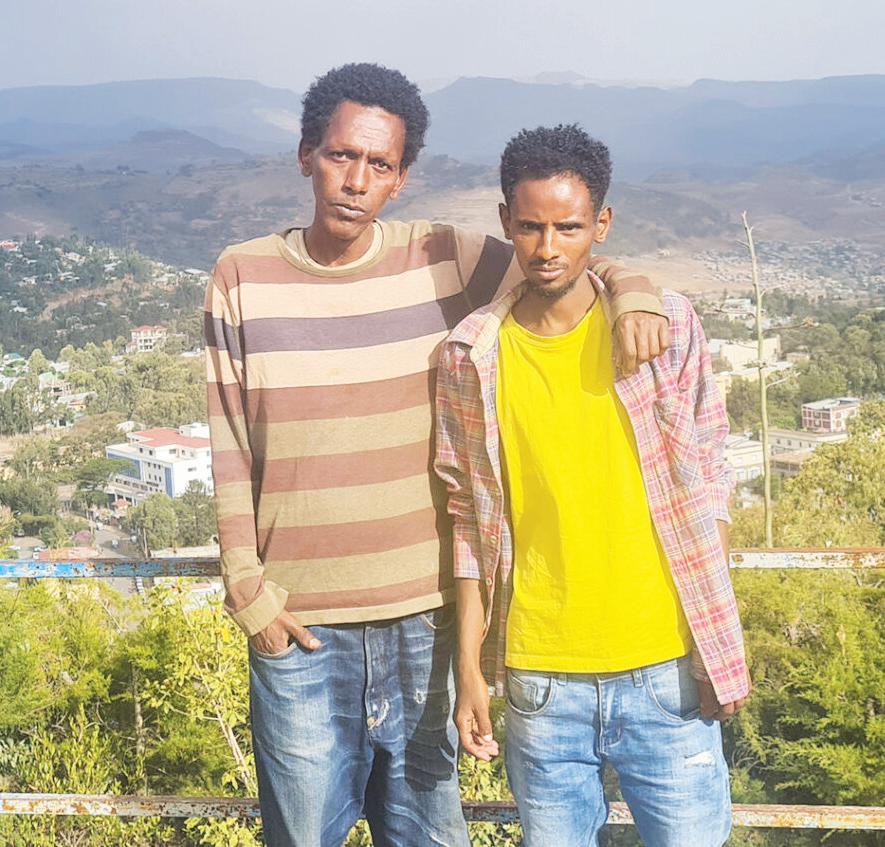
A graduate of Addis Ababa University’s mathematics department, she speaks basic English and is working on her Hebrew, she said. Ahead of the flight, she modified a white dress by embroidering large, blue Stars of David on its hem and sleeves. “This is a festive day,” she explained.
But over the course of the flight, she grew more nervous.
Asked by a journalist about her feelings at that moment, she was visibly embarrassed. Discussing emotions is uncustomary in her culture. “I don’t know,” she replied. “Because I don’t really know the place where we’re going.”
Elaine Bettman
Sylvia Blum
Frieda Blum
Buck Run Doors & Hardware Inc.
Roger Chudde
Natalie Cohn
Betty Crouse
Howard & Sue Ducker
Esther & DeNeal Feldman
Bruce & Debbie Feldman
Lynn Foster
Cathy Gardner
Mrs. Jack Goldberg
Kim & Shelley Goldenberg
Lynn & David Goldenberg
Debby & Bob Goldenberg
Rochelle & Michael Goldstein
John Gower
Dr. Arthur & Mrs. Joan Greenfield
Harold & Melissa Guadalupe
Dr. & Mrs. Stephen Harlan
Ralph E. & Sylvia S. Heyman
Linda & Steve Horenstein
Rachel Jacobs
Michael Jaffe
Marc Katz & Julie Liss-Katz
Susan & Stanley Katz
Allan & Linda Katz
Don & Harriet Klass
Cantor & Mrs. Jerome Kopmar
Edye Leuin
Todd & Gabriele Leventhal
Laurie & Eddie Leventhal
Ellie Lewis
Judy Lipton
Sis & Joseph Litvin
Beverly A. Louis
David & Joan Marcus
Suzi & Jeff Mikutis
Irvin & Gayle Moscowitz
Richard & Marcia Moyer
Bobbie & Jack Myers
Dr. Ronald & Susan Nelson
In honor of Natalie M. Davis RN NICU
Neonatal, Cedar Sinai Hospital, L.A.,
granddaughter of Martin Nizny
Phil Office
Cindy Pretekin & Jeff Froelich
Sharyn Reger
Susan & Nathaniel Ritter
Helen Ross
Dr. & Mrs. Gerald Rubin
Jan Rudd Goenner
Sumner Saeks
Diane Lieberman Slovin
Maggie Stein
Marc & Maureen Sternberg
Col. Jeffrey Thau, USAF, (Ret.) & Rina Thau
Bob & Suzanne Thum
Louis & Doris Ullman
The Waldman family
Judith Weber
Donald & Caryl Weckstein
Michael & Karen Weprin
Ronald Bernard & Judy Woll
Connect with us! Check out our events. For more information, see our calendar at jewishdayton.org
Saturday, July 16, 10:00 a.m. to 12:00 p.m. — PJ Library Prayer and Play
Sunday, July 24, 1:05 p.m. to 6:00 p.m. — JCC Dayton Dragons Community Day
Save the date: Wednesday, August 17, 6:00 p.m. to 8:00 p.m. — JFGD Annual Meeting
Join the JCC for a kickoff to our new Boomers Group* for people born between 1946-1964! Meet and mingle with your fellow Boomers as we enjoy some food, drinks, a campfire, and great music! Must bring your own chair and your best singing voice for this night of Boomer fun!

*Bell bottoms and Nehru jackets optional.
When: Where: Cost:
Sunday, August 28, 7:00 p.m. to 9:00 p.m.
Possum Creek MetroPark – Prairie Dock Shelter 4730 Frytown Rd., Dayton, Ohio Free!
Must RSVP By Sunday, August 14.
Kosher cookout with hot dogs and hamburgers; vegetarian option available. Please indicate on registration if you want the vegetarian option.
SAVE THE DATE: ANNUAL MEETING, WEDNESDAY, AUGUST 17
INDIAN RIFFLE PARK 2801 E. Stroop Road, Kettering, 45420
Meet. Eat. Feel complete. Fun for all ages! Free dairy kosher lunch. RSVP required for lunch by Friday, July 22 at jewishdayton.org



Funding provided by an Innovation Grant of the Jewish Federation of Greater Dayton SAVE THE DATE: ANNUAL MEETING, WEDNESDAY, AUGUST 17

PJ Library joins Rabbi Sobo of Temple Israel as we celebrate Shabbat with challah, a craft, and more!
Saturday, July 16 10:00 a.m. - 12:00 p.m.
Orchardly Park
343 Wonderly Avenue
Oakwood, Ohio 45419 RSVP
kelder@jfgd.net
jewishdayton.org/event
This program is geared toward ages 8 and under, but all ages and parents are welcome to attend.

Sunday, July 24, game begins at 1:05 p.m.
Come have a great time at a Dayton Dragons game! Enjoy an afternoon at the ballpark and celebrate as the JCC of Greater Dayton turns 100!


What’s included?
Game ticket for a stadium seat
Great family entertainment
$7 of every ticket purchased is returned to the JCC
How to order:
Call ticket representative Carl Hertzberg at 937-228-2287 ext. 160 Order online at jewishdayton.org
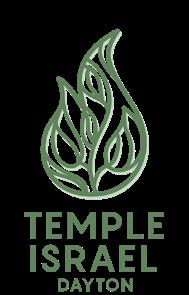
Call Helen Jones at 937-610-5513 to request an order form Deadline to order is Monday, June 27
Tickets:
$14.00/person for tickets texted to you
$16.00/person for tickets printed and mailed to you
JEWISH FEDERATION of GREATER DAYTON & ITS AGENCIES
HOLOCAUST PROGRAMMING FUND
IN HONOR OF
JEWISH FEDERATION OF GREATER DAYTON ENDOWMENT FUND
IN MEMORY OF
› Shirlee Gilbert
Heath Gilbert’s Card Group
Harlan and Kelley Louis
Judy Woll
Jason Gilbert and Family
Jane and Gary Hochstein
Clara Hochstein
Melinda and Bill Doner
Mary and Gary Youra
Donna and Marshall Weiss
Karen Mellman-Smith
Ann and Scott Liberman
Michelle and Steve Rothenberg
IN MEMORY OF
› Barbara Gerla
Cathy Gardner
IN MEMORY OF
› Fred Weber
Cathy Gardner
PAST PRESIDENTS FUND
IN MEMORY OF
› Col. Ralph Zimmerman USAF
Sylvia and Ralph Heyman
JOE BETTMAN MEMORIAL TZADIK AWARD
IN MEMORY OF
› Fred Weber
› Debra Saidel
Jean and Todd Bettman
IN MEMORY OF
› Shirlee Gilbert
Kathy and Mark Gordon
JCRC
IN MEMORY OF
› Barbara Gerla
Helen Jones
FOUNDATION
THE RESILIENCE SCHOLARSHIP FUND
IN MEMORY OF
› Dan Weckstein
Milton Nathan
LINDA RUCHMAN MEMORIAL FUND

IN MEMORY OF
› Debra Saidel
Judy and Marshall Ruchman
ADDISON CARUSO B’NAI TZEDEK YOUTH PHILANTHROPY FUND
IN MEMORY OF
› Debra Saidel
Patty and Michael Caruso and family
IN MEMORY OF
› Debra Saidel
Rachel and Heath Gilbert
Melinda and Bill Doner
IN MEMORY OF
› Fred Weber
Melinda and Bill Doner
› The new grandson of Sheryl and Scott Mattis
Beverly and Jeffrey Kantor
JEWISH FAMILY SERVICES DISCRETIONARY FUND
IN MEMORY OF
› Debra Saidel
Sam Guggenheimer
Iris and David Friedman
Jane and Gary Hochstein
Donna and Marshall Weiss
Cathy Gardner
IN MEMORY OF
› Shirlee Gilbert
Cathy Gardner
Marilyn and Larry Klaben
JOAN AND PETER WELLS AND REBECCA
LINVILLE FAMILY, CHILDREN AND YOUTH FUND
IN MEMORY OF
› Shirlee Gilbert
› Debra Saidel
› Rosalyn Moss
Joan and Peter Wells
CAROLE RABINOWITZ CAMP FUND
IN MEMORY OF
› Barbara Gerla
Diane Rubin Williams
Raised as a Jewish kid in Queens, NY, Burt Bacharach gravitated toward music. He became a composer, songwriter, record producer, and pianist who wrote hundreds of pop songs from the late 1950s through the 1980s, including “I Say a Little Prayer,” “I’ll Never Fall in Love Again” and “Do You Know the Way to San José?”
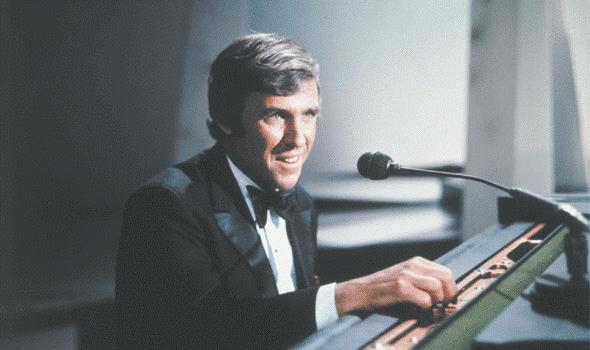
Join the JCC and the JCC Alliance for a tribute concert on Wednesday, July 13, from 4:00 p.m. to 5:00 p.m. Tickets are $12.50 until July 11, $15.00 July 12 – 13.
Contact Helen Jones at hjones@jfgd.net or 937-610-5513 for tickets.
Ellen Swartz was born in Akron and has lived in Dayton since she was a teenager. She is a licensed social worker (LSW) with over twenty years of experience in various social work settings, including residential, mental health, and medical. In fact, she worked at Covenant House for five years in the mid-2000s. Ellen currently resides in West Carrollton with her two rescue cats and mini golden doodle. In her spare time, she likes to read, binge-watch TV shows, enjoy the outdoors, swim, go to the movies and spend time with friends and family. Ellen is quite happy to be back working in the Jewish community. Please welcome Ellen to our staff!

Seattle’s Jewish community was outraged that an assistant police chief who displayed Nazi symbology got off with a two-week suspension and sensitivity training. It called on the city of Kent to “treat the offenses with the seriousness and care they deserve.”

So the small city near Seattle got serious and paid Assistant Chief Derek Kammerzell $1.52 million to go away.

In a statement June 10, the Jewish Community Relations Council of the Jewish Federation of Greater Seattle said that while it was “disturbing” Kammerzell came away with the substantial settlement, it was “grateful” he was gone.


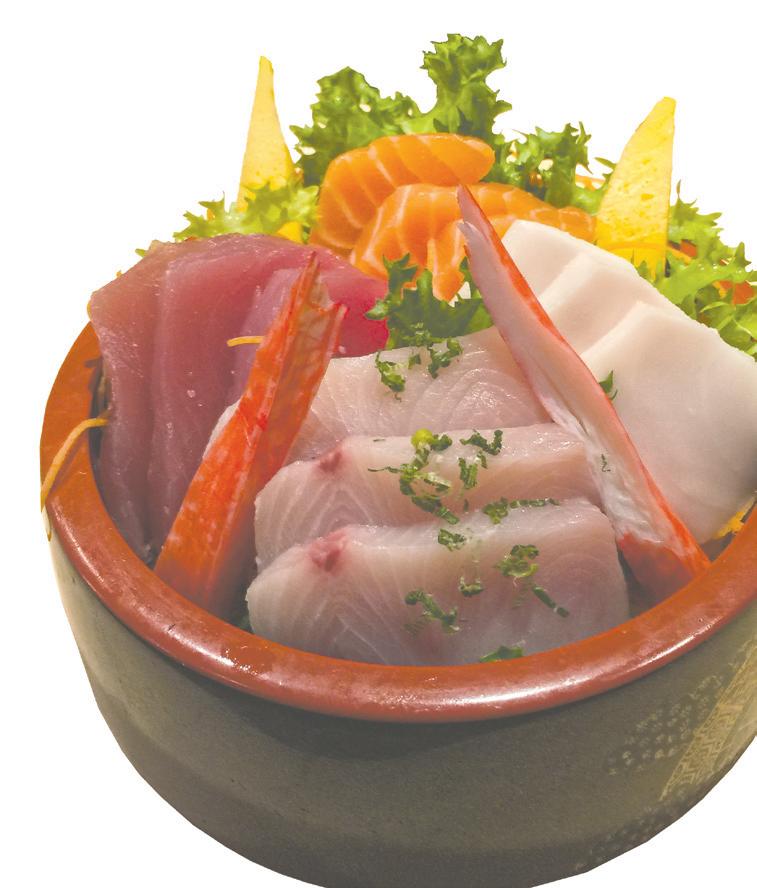
In September 2020, a colleague reported that Kammerzell had taped the insignia of an SS officer to his door. Fellow officers said that Kammerzell, who is of German heritage, often joked about the Holocaust, once saying “that his grandfather died in the Holocaust after getting drunk and falling” out of a guard tower, The New York Times reported June 14.

In its statement last December, the Seattle JCRC said it was “horrified” to learn of Kammerzell’s actions, which had come to light because of the publication of an internal police department investigation, and the scope of his punishment.
“The two-week suspension and sensitivity training given in response are completely inadequate, especially at a time when incidents of hate against the Jewish people are higher than they’ve been in almost 45 years,” it said.

It concluded, “We call on the City of Kent to immediately revisit the situation, publicly recognize the harm and hurt caused to our Jewish community, and treat the offenses with the


seriousness and care they deserve.”
City officials said in a release that the city could not negotiate the termination settlement down further from $1.52 million, about half the $3.1 million Kammerzell’s lawyer originally asked for, because Kammerzell’s 27-year record was unblemished by disciplinary action and community complaints and because of “double jeopardy principles,” a reference to the fact that the city had already punished Kamerzell for the same offense with the two-week suspension.

The city’s statement noted that it had consulted throughout the process with members of the Jewish community, including the JCRC.
“Since January, our professional team has had the opportunity to work closely with the City of Kent on their response,” the JCRC said in its more recent statement. “We are impressed by the seriousness, humility, and sensitivity with which Mayor Dana Ralph and her team are addressing both Kammerzell’s specific actions and tackling antisemitism overall.”

A cop displayed Nazi symbols and joked about the Holocaust. A city near Seattle paid him $1.5 million to go away.A Washington State assistant police chief taped the insignia of an SS officer over his nameplate on his door


Men flying banners with far-right symbols gathered outside a synagogue in Germany on the anniversary of its attempted torching, allegedly by a Turkish citizen.
Gathering June 5 in Ulm near Munich, about 10 men displayed one banner reading: “White lives matter, stop the White genocide.” Another banner depicted the black sun symbol, which is popular among neo-Nazis.
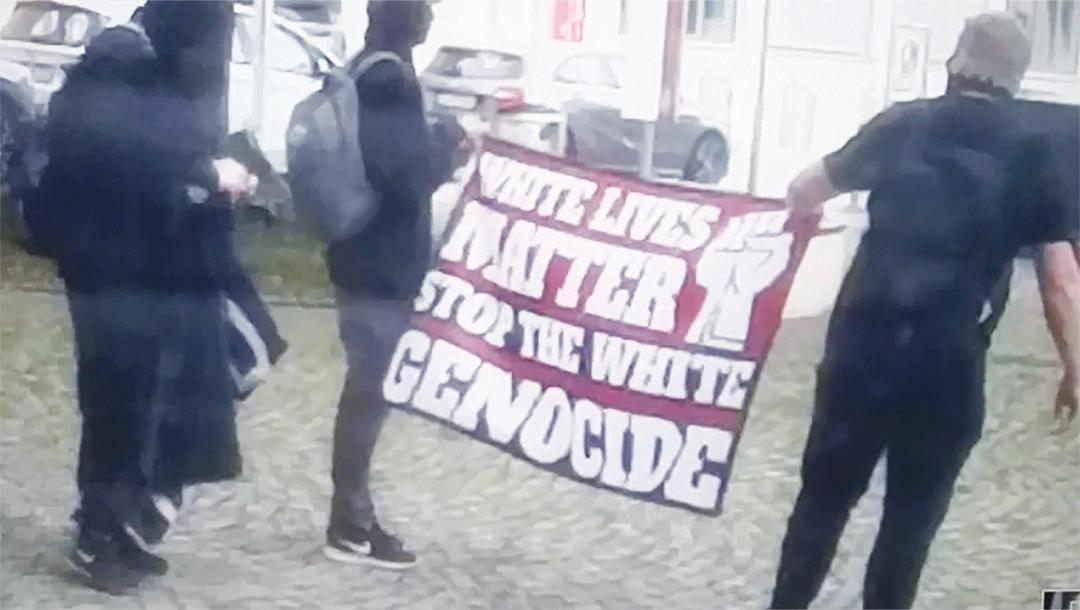
Local non-Jews confronted the demonstrators and made them leave the scene, according to T-Deutschland.
The date of the event was the oneyear anniversary of the attempted arson at the synagogue, which authorities say was perpetrated by 45-year-old dual citizen of Turkey and Germany. He poured gasoline on the facade and set it ablaze. Rapid intervention by neighbors and firefighters prevented the flames from spreading into the building.
The suspect fled Germany and is hiding in Turkey, which is refusing to
extradite him. T-Deutschland said the demonstration may have been intended to celebrate the arson attempt. The local congregation’s rabbi, Shnuer Trebnik, did not rule out the possibility that the neo-Nazi gathering was to celebrate the actions of the Turkish fugitive. “We experience so many absurdities, it’s possible. They might have a common interest,” he told T-Deutschland. Farright extremists are generally hostile both to Jews and to immigrants from Muslim-majority countries.
Police are investigating the incident outside the synagogue.
WASHINGTON — A filing in a case stemming from the Jan. 6, 2021 insurrection revealed that a U.S. Marine in a relationship with one of the defendants served 19 months for a plot to shoot up a synagogue.
The revelation came in a filing by federal prosecutors arguing against a request by an alleged insurgent, Riley Williams, to loosen restrictions pending her trial.
Williams, who lives in Harrisburg, Pa., lied about a meeting she had with the former Marine, the prosecutor’s filing said. Williams, who is under house arrest and wears an ankle monitor, is seeking less stringent restrictions, the Patriot-News reported.
The June 10 filing by the U.S. Attorney does not name the Marine, who was given a badconduct discharge, or when or where he plotted to attack a synagogue. It says only that he “stole his roommates’ truck and attempted to purchase a firearm with the intent of committing a mass shooting at a synagogue.”
The man “was sentenced to 19 months in custody and was given a bad-conduct discharge from the U.S. Marines Corps.”
Williams, who is among the more prominent defendants because she allegedly stole U.S. House of Representatives Speaker Nancy Pelosi’s laptop, broke conditions of her release by having video meetings with the former Marine, “who is believed to be Williams’ thenboyfriend” and by meeting with him in person in August 2021, the filing said.
At that in-person meeting, the former Marine revealed to Williams “the circumstances of his prior arrest, prosecution, incarceration and discharge from the United States Marine Corps.”
Bellingcat, an investigative journalism website, was the first to identify Williams shortly after the insurrection.
I have a question that has guided me and confused me through so much of my life.
Am I a Jew?
I know that according to Jewish law, I am Jewish, since my mother is Jewish. But am I Jewish enough? I wonder this every Friday night, at holiday gatherings, when I volunteer, at work.
Since I married my husband, and even more so since I moved to Dayton, I feel more comfortably part of this extended Jewish family, but that hasn’t stopped me questioning my place in it. Could this questioning be part of what defines my Judaism?
Religious traditions were not part of my upbringing. My family didn’t belong to a synagogue. I never had a bat mitzvah, and I don’t understand Hebrew.
On the flip side, I was proud to grow up a Jewish New Yorker. Yiddish words were sprinkled in our conversations at home, I loved my mom’s Eastern European-inspired cooking, I watched her with somber curiosity as she lit yahrzeit candles. And I was defensive, ready to fight anyone I felt was uttering an antisemitic sentiment.
But it’s more complex than the religious vs. cultural debate. It’s tricky to try to describe the nuances that sculpt a family. It’s much easier to say “I’m Jewish” than to explain my mother is a Jew from the Bronx and my dad was raised Catholic.
Should I mention that I observed my grandmother whispering the rosary at night? That my great aunt the nun lived in a convent I loved visiting because they grew their own food and had a tiny museum of Lithuanian amber?
I’m often met with blank stares when I share these anecdotes with members of the Jewish community. My imposter syndrome starts to set in.
I was named after the German Jewish philosopher Hannah Arendt. In the 1930s, Arendt became a political activist, working with the German Federation of Zionists and
rescuing Jewish children from the Third Reich. She was arrested in Germany and later interned in France.
In 1941 she immigrated to America where she wrote for various Jew ish publications, published her influential books, and established herself as an American intellectual.
In Arendt’s most controversial book, Eichmann in Jerusalem (1963), she originated the idea of “the banality of evil.”
The Eastern European Jewish tradition would have you name your child after a deceased relative. My folks decided to have me walk in the footsteps of a woman who theorized that there could have been more done to prevent 6 million deaths had the victims been more politically active and not taken “the banality of evil” for granted.
The architect of the Final Solution, Arendt claimed, was a bureaucrat, and not an ideologue. Arendt’s ideas may be uncomfortable, and yet the concept of the banality of evil was eerily prescient when we watch the horrors now unfolding before us, from extremist right-wing groups in the U.S. and Europe, to Putin’s war against Ukraine, to domestic terrorism in our country.
It’s only recently that I’ve started thinking about why my parents chose my namesake. I’ve never asked, but I can guess it’s because she was fiercely intellectual and brave, in a way I can only imagine.
Her relationship to Judaism, though complex, was unmistakably central to her identity.
My parents are pragmatic, critical, and individualist. As children in the 1940s, they both lost their fathers and were raised by single mothers. They pursued their education and moved to Manhattan in the ‘60s. They love to tell me that in the
’70s, they were both teaching where “the Bronx was burning.”
My parents married and had children later than most in their generation. They grew up poor, left home, and married outside their faith, ultimately choosing to reject religion.
When they had children, they put their heads together and decided that when it came to religion, it was better not to decide. My brother and I would find our own paths.
Their approach to parenting would be laissez faire: letting things take their own course.
I can’t help being influenced by them, to admire their individualism, and to carry that into my sense of what it means to be a creative individual.
The thing is, no matter how much I respect my parents, I have yearned since childhood for a sense of belonging to a greater community, and it wasn’t until I met my husband that I started to embrace and explore the role of Judaism in my identity.

You would think that spending my 20s and 30s in Brooklyn would have made it easy to find a Jewish community with which I could relate.
I suppose the closest version was Secular Humanist Judaism. My husband and I tried a popup synagogue that described itself as “an artist-driven, everybody-friendly, God-optional, experimental community for sacred Jewish gatherings.”
We went for holidays to a house in South Brooklyn with potluck dinners where it was OK to be “Jew-ish.”
We joined The Workers Circle, hoping to get more involved with the social justice aspects of Judaism, but everyone worked too much and no one ever wanted to get together for Shabbat.
I kind of loved all those places, but it was all a little vague and noncommittal. I never found my group or an especially firm sense of Jewish acceptance in New York City. Everyone seemed to have it
figured out, because they grew up Conservative, or Reform, or whatever, and they knew exactly what it was they were supposed to embrace or rebel against.
Who gets to decide if you’re Jewish enough? Is it a higher being, those who came before you, the community? What if the deciding entity is not there to speak for you?
If your definition of being Jewish is holding faith in a certain higher being, I don’t fit your ideal.
If it is questioning what defines faith, an inexplicable feeling of connection to the past, and a desire to build community, then I may find my place.
Still, is this enough? My husband has listened to me debate myself on this matter so many times throughout our years together. He has gently tried to convince me that I’m my own worst enemy, that no one is judging me, and that there are multiple ways to be Jewish. How is a child molded into who they become when they are raised outside of tradition? My parents chose to walk their own path and I was free to follow or find my own way.
Some would argue you will be lost without a set of tenets to live by. I know that’s not true. I live by a strong moral code and am raising my children with intent.
Still, there might be a reason why I don’t have the confidence to say out loud, “I belong,” and believe it. We need a larger community outside ourselves, for so many reasons, both practical and existential.
So I’m working on it. I’m looking for the balance between individualism and the idea that I’m a puzzle piece in a cultural jigsaw.
My husband and I are raising our children with Jewish traditions and holidays, while I teach in a Jewish school.
We’ve had some lovely Friday nights with our havurah of new friends. I’m trying to give our kids the sense of belonging that I yearned for, while encouraging them to respectfully question what they are taught, and to make their own decisions as they grow.
Am I a Jew?
It seems no one can really answer this but me.
‘Could this questioning be part of what defines my Judaism?’

Anonymous
Bernard Rabinowitz
Sam Levin Foundation
Michael Goldstein
Joe and Susan Gruenberg
Lisa Hanauer & Sue Spiegel
Mr. & Mrs. Mark Jones
Barbara Mendelson
Philip A. Office
Marlene & Terry Pinsky
Cantor Andrea Raizen
Stephen Renas
Theodore Arnovitz Film Festival Fund

Michael & Patty Caruso
Enrique & Ruth Ellenbogan
Marni Flagel
Renate Frydman
Friends of the Community
Michael Herrlein
Linda & Steve Horenstein
Susan & David Joffe
Joseph & Marsha Johnston
Ed & Marcia Kress
Ann R. Laderman
Marc & Julie Liss-Katz
Judy Lipton
David London & Kim Dinsmore
Dr. & Mrs. Donald Marger
The Rubi Girls
Judy Schwartzman & Mike Jaffe

Norman & Mary Rita Weissman

Joan & Peter H. Wells (In Memory of Rebecca Linville)
Andrea Raizen - Chair
Judy Schwartzman - Vice Chair
Jack Bernstein
Connie Blum
Mike Caruso
Alan Chesen
Enrique Ellenbogen
Ruth Ellenbogen
Renate Frydman
Felix Garfunkel
Gayle & Irvin Moscowitz
Beth Adelman
Matt & Elaine Arnovitz
Jack & Maryann Bernstein
Beth Abraham Synagogue
Ken & Lisa Blum
Stanley & Connie Blum
Libby & Ken Elbaum
Alan & Becky Elovitz
Adam & Tara Feiner
Neil D. Friedman
Felix Garfunkel
Paula J. Gessiness & Jay M. Holland
Rabbi Joshua Ginsberg
Debby & Bob Goldenberg
David & Lynn Goldenberg
Dr. Kim & Mrs. Shelley Goldenberg
Martin Gottlieb
Judy Heller
Linda & Allan Katz
Meredith & Jim Levinson
Cheryl & Franklin Lewis
Beverly A. Louis
Carol & James Nathanson
Carolyn Rice
Alice & Burt Saidel
Dan & Kim Shaffer
Suzanne & Bob Thum
Dieter & Suzi Walk
Joni & Ralph Watson
Dr. Warren Wingate
Judy Woll
Michael Goldstein
Judy Grampp
Michael Herrlein
Gary Hochstein
Susan Joffe
Marc Katz
Tambrina Klein
Ryan Levin
Meredith Levinson
Dave London
Frieda Blum
Dena Briskin
Judy & Alan Chesen
Phil & Louisa Dreety
DeNeal Feldman
Lynn Foster
Bella Freeman
Roz Gray
Henry Guggenheimer
Sharon & Izzy Guterman
Helen Ostreicher Halcomb
Lois Harris
Meryl Hattenbach
Clara Hochstein
Jane & Gary Hochstein
Emily & Jon Holt
Joan Isaacson
Karin Hirschkatz & Neil Katz
Janice Kohn
Kim & Candy Kwiatek
Wendy Lipp
Ruthe Meadow
Linda Novak
Edie Pequignot
Cherie Rosenstein
Helen Ross
Nick & Bobbie Schmall
Jeff & Julie Stoller
Diane & Ralph Williams
Ruthe Meadow
Gayle Moscowitz
Bernard Rabinowitz
Steve Renas
Elliot Ratzman
Marci Vandersluis
Marc Jacob (Sr. Director, JCC)
Helen Jones (Program Administrator)
WASHINGTON — A bipartisan slate of lawmakers launched a bill that would establish an “integrated air and missile defense capability” joining the United States, Israel, and Arab countries in a bid to deter Iran. Senate and House members of the Abraham Accords Caucus rolled out the bill, called the DEFEND Act, in a press conference June 9 outside and described it as means of advancing the U.S.-brokered normalization agreements between Israel and four Arab countries that collectively bear that name.
“The full potential of the Abraham Accords, economic cooperation, education exchanges, trade agreements between Israel and our Middle Eastern partners, cannot be achieved without a commitment to collective security,” said Sen. Joni Ernst, an Iowa Republican who is the lead co-sponsor of the bill with Sen. Jacky Rosen, a Nevada Jewish Democrat. “America’s role in activating and networking our allies and partners in the Middle East must evolve as violent extremists, like Iran, change their tactics and onboard new systems capable of catastrophic damage against civilian targets.”

It’s not clear from the bill how formal the arrangement would be. The bill tasks the secretary of defense with establishing an “architecture” and “acquisition approach” for an “integrated air and missile defense system” to counter threats from Iran. Israel has traditionally been wary of formal defense pacts with even its closest allies, wishing to preserve its right to act unilaterally. However, Israeli officials have in recent years signaled that less formal arrangements that preserve Israel’s agency are acceptable. The bill also designates as participants in the arrangement the four countries signed onto the Abraham Accords — Morocco, Sudan, the United Arab Emirates and Bahrain — as well as countries that still have no relations with Israel, including Saudi Arabia and Iraq. Saudi Arabia looks closer than ever to formalizing what has been for years a secret relationship with Israel, and reportedly are near an agreement that would allow Israeli aircraft to fly through Saudi air space. But Iraq is openly hostile to Israel.
Ernst said the United States should coax those countries into participation. She noted the U.S. consulate in Erbil, Iraq, came under drone attack June 8, an area that has in the past come under fire from Iran and its proxies.
Classes
Beth Jacob Classes: Sundays, 2 p.m.: Conversions w. Rabbi Agar. Tuesdays, 7 p.m.: Weekly Parsha w. Rabbi Agar. Thursdays, 7 p.m.: Jewish Law w. Rabbi Agar. 7020 N. Main St., Harrison Twp. 937-274-2149.
Temple Israel Classes: Sat., July 2, 16 & 30, 9:15 a.m.: Torah Study via Zoom. Sat., July 9 & 23, 9:15 a.m.: Torah Study in person & via Zoom. 130 Riverside Dr., Dayton. tidayton.org. 937-496-0050.
Children
JCC Camp Shalom: Through July 22. Grades 1-10. At Temple Beth Or, 5275 Marshall Rd., Wash. Twp. Register at jewishdayton.org.
Chabad Camp Gan Israel: July 25-Aug. 12. Ages 5-11. 2001 Far Hills Ave., Oakwood. Register at cgidayton.com.
Family
Temple Israel & PJ Library Prayer & Play: Sat., July 16, 10 a.m. W. Rabbi Tina Sobo. Orchardly Park, 343 Wonderly Ave., Oakwood. For children 8 and under and their families.
R.S.V.P. to Kate Elder, kelder@ jfgd.net or at jewishdayton.org/ event.
Community
JCC Alliance Virtual Tribute to Burt Bacharach: Wed., July 13, 4 p.m. $12.50 until July 11. $15 July 12-13. Register at jewishdayton.org/events or contact Helen Jones at hjones@jfgd.net or 937-610-5513.
JCC Day at the Dragons: Sun., July 24, 1:05 p.m. Day Air Ballpark, 220 N. Patterson Blvd., Dayton. $14 for each texted ticket, $16 for each mailed ticket. Purchase deadline June 27 via Ticket Rep. Carl Hertzberg, 937-228-2287, ext. 160; jewishdayton.org or call JCC’s Helen Jones, 937-610-5513, for order form.
Beth Abraham Field Day: Sun., July 31, 10 a.m.-1 p.m. Includes free kosher dairy lunch with reservation. Indian Riffle Park, 2801 E. Stroop Rd., Kettering. Partnering w. Beth Jacob, Chabad, Hillel Academy, the JCC Early Childhood Program, PJ Library, Temple Beth Or & Temple Israel. R.S.V.P. for lunch by July 22 at jewishdayton.org.
Dayton Dragons co-principal owner Greg Rosenbaum cochaired and served as master of ceremonies of the Jewish American Heritage Month Luncheon, held in the Kennedy Caucus Room on Capitol Hill
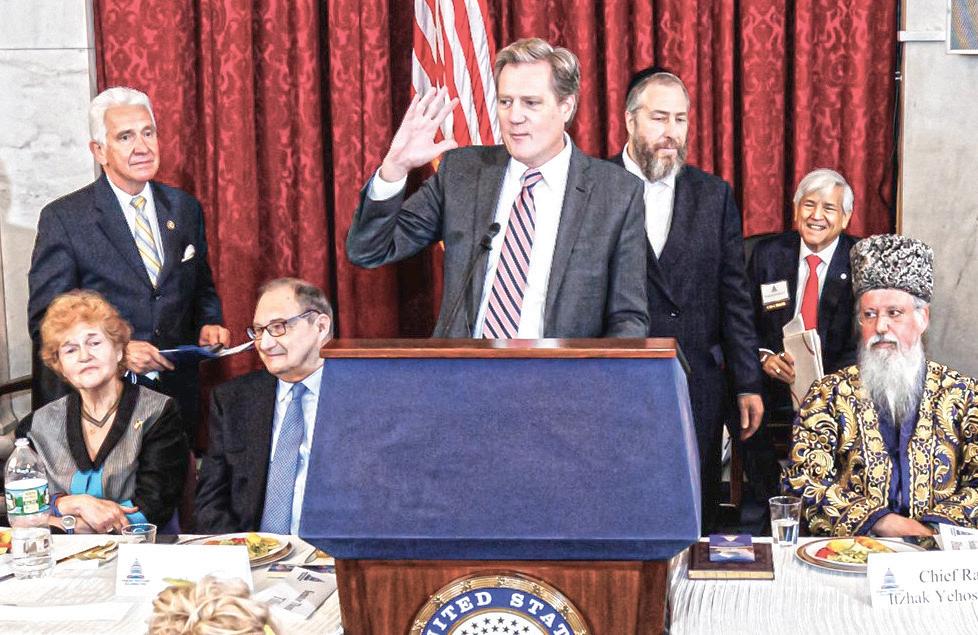 Marshall Weiss
Marshall Weiss
May 17, the first time in three years the luncheon has been held in person.
Among the speakers were U.S. Rep. Mike Turner and Ohio Sen. Sherrod Brown Rosenbaum chairs the Jewish American Heritage Month Advisory Board. Its aim is to highlight the contributions of Jewish Americans to American history, culture, and society, and educate non-Jews about those contributions.
The luncheon honored former Anti-Defamation League

with The Dayton Jewish Observer’s Marshall Weiss
Search for The Dayton Jewish Observer in Apple podcasts, Google podcasts, or your favorite podcast app and subscribe.
Or listen on the web at player.whooshkaa.com/ shows/the-dayton-jewishobserver.
National Director Abe Foxman, philanthropists Tzili Charney and Rabbi Moshe Margaretten, and Bukharian Chief Rabbi Itzhak Yehoshua
“One of the perks of emceeing an event like this is that I get to introduce my senators and representatives,” Rosenbaum said of Turner and Brown. Turner talked about the contributions of Dayton’s Jewish community to the city, such as the Schuster Center. Brown spoke of the contributions American Jews have made in human rights and civil rights.
Jacob Westerkamp graduated magna cum laude in computer engineering from Ohio Northern University in Ada, where he also played center back on the men’s soccer team. He is currently deciding between graduate school and professional employment. Jacob’s proud family includes his parents, John and Lori, and his sister, Rachel.

Send your Mazel Tov announcements to mweiss@jfgd.net.




In 2000, Friends of Chabad Lubavitch in Washington, D.C. organized an event called Celebration 50, commemorating 50 years of the Rebbe’s leadership. At one of the sessions, 50 Chabad rabbis representing the 50 states signed a citation of gratitude to present to the president of the United States on behalf of the Chabad movement.
The citation of gratitude was to pay tribute and give thanks to the United States for having rescued the sixth and seventh Rebbes of Chabad from the
Nazi inferno in Europe.
Today we know the details of the harrowing story of how high-level American intervention led to an extraordinary episode: the German military intelligence arm, the Abwehr, was tasked with locating and rescuing Rabbi Yosef Yitzchak Schneersohn and his family in the middle of devastated Warsaw and seeing that they would be brought to a safe place.
American leadership opened the doors of the U.S. to Rabbi Schneersohn and his family when welcoming Jewish refugees was still highly unpopular here. He settled in Brooklyn and immediately resumed his holy work.
America again opened its doors in 1941 to the Rebbe’s son-in-law, Rabbi Menachem Mendel Schneerson. He was sent on the last commercial passenger ship to cross the Atlantic before sea travel became too dangerous.
Eventually, he would succeed his father-in-law, Rabbi Yosef Yitzchak, and spearhead a worldwide renaissance of Jewish commitment from his Brooklyn headquarters.
The Rebbes were both constantly grateful to America for what it had done.
Rabbi Menachem Mendel Schneerson, known simply as the Rebbe, would refer to the U.S. as a “country of lovingkindness.” He often pointed out its virtues as historically important, even as he tried to help guide the process of national growth towards a realization of its most profound values.
I was honored to represent
our state of Ohio. Personally, it was a great privilege for me, being a child of a Holocaust survivor who was also welcomed here, who raised a beautiful family, and did his holy work here as well. It was a moving moment that I remember with great fondness.
On the occasion of our nation’s birthday, it is worth giving thanks again for the remarkable privilege of being a citizen of this land of lovingkindness.
This does not mean that we pretend for a moment that we have fully realized the ideals that call America to greatness. We have not yet accomplished what all those ideals demand of us.
We must make a truthful accounting and, without flinching, see where more work is needed and what things need to be repaired or reconsidered.
However, at the same time, we look with an equally sharp gaze at the good that Americans have realized, value it properly, and gain inspiration from every good accomplishment.
Ignoring that which needs correcting makes us less than we should be. Missing the good we have accomplished leads to paralysis and depression rather than a deepened commitment and an unstoppable advance.
King Solomon tells us that “The wise have eyes in their head.” That curious teaching means that we should look to the head— meaning, the beginnings, where we come from — to evaluate where we are in the present.
Through history, we can see a trajectory that moves us ever further toward those magnificent ideals upon which this country was founded. We strive toward a more perfect Union, meaning that we embrace the idea that our national life should always move towards perfection.
And we have in our own history that which can inspire us as well. In a century that saw tyrants trying to subjugate the world to their violent power, Americans in the millions paid with their blood, treasure, and labor to stop them.
We did not take land or colonies as our reward. We sought only to restore the conquered peoples and even our one-time enemies to calm and prosperity — acts of kindness on a massive scale unprecedented in human history.
It has been said, “If you want to know how bad the world is, read the newspaper, and if you want to know how good it is, study history.”
Let’s do both — approach the problems that confront us today with the confidence that history should give us. Though this country may be imperfect, it has been and continues to be kind in ways never seen before in the world.
Confident that our own Jewish experience and teachings are at work in this America, let us rededicate ourselves towards realizing Judaism’s grand vision of a time that there will be neither famine nor war, neither envy nor rivalry, for good will flow in abundance, and all the delights will be freely available as dust, and therefore the occupation of the entire world will be solely to know God.
Continued from Page Eight
to the antisemitism that fueled the Holocaust.
The commission’s findings, which have been Vatican policy, is that the church’s theology-based “anti-Judaism” was essentially unconnected to the Nazi “antisemitism based on theories contrary to the constant teaching of the Church.”
Kertzer is among the many critics of this reading of history. Those critics argue that the centuries of persecution of Jews led by the Catholic Church paved the way in some ways to the Nazi genocide.
“Forcing Jews to wear yellow badges and keeping them locked in ghettoes were not inventions of the Nazis in the 20th century, but a policy that the popes had championed for hundreds of years,” Kertzer noted in a 2001 op-ed in The New York Times
On June 9, Kertzer said the Vatican was worthy of praise for that decision. But, he added, “there are limitations” on accessing other archives, including the Vatican’s Secretary of State archives and some archives connected to the Inquisition.
Still, Kertzer said that he is “not in a position to say what Mr. Dayan should or should not have said during the meeting” with the pope.

July 1: 8:50 p.m.
July 8: 8:49 p.m.
July 15: 8:46 p.m.
July 22: 8:41 p.m.
July 29: 8:35 p.m.
July 2: Korach (Num. 16:1-18:32)
July 9: Chukat (Num. 19:1-22:1)
July 16: Balak (Num. 22:2-25:9)
July 23: Pinchas (Num. 25:10-30:1)
July 30: Matot-Masei (Num. 30:2-36:13)
Fast of the 17th of Tammuz
Postponed because of Shabbat until July 17, 18 Tammuz
Commemorating numerous calamities that fell on the Jewish people on this day, this fast is observed from dawn until dusk. Among the calamities were the breach of the walls of Jerusalem by the Babylonians in 586 B.C.E. and by the Romans in 70 C.E. Marks the beginning of the Three Weeks, a period of mourning for the destruction of the First and Second Temples in Jerusalem, culminating on the Ninth of Av.
Beth Abraham Synagogue Conservative Cantor/Dir. of Ed. & Programming Andrea Raizen
Saturdays, 9:30 a.m. 305 Sugar Camp Circle, Oakwood. 937-293-9520. BethAbrahamDayton.org
Beth Jacob Congregation Traditional Rabbi Leibel Agar
Sundays & Wednesdays, 7:15 p.m. Saturdays, 9:30 a.m. 7020 N. Main St., Dayton. 937-274-2149. BethJacobCong.org
Temple Anshe Emeth Reform
320 Caldwell St., Piqua. Fri., July 8, 7:30 p.m. lay-led Shabbat Shira service with Steve Wyke & Mahira Rogers Contact Steve Shuchat, 937-7262116, AnsheEmeth@gmail.com. ansheemeth.org

Temple Beth Or Reform
Fridays, 6:30 p.m. Rabbi Judy Chessin
Asst. Rabbi/Educator Ben Azriel 5275 Marshall Rd., Wash. Twp. 937-435-3400. templebethor.com
Temple Beth Sholom Reform
Rabbi Haviva Horvitz 610 Gladys Dr., Middletown. 513-422-8313. templebethsholom.net
Temple Israel Reform
Senior Rabbi Karen BodneyHalasz Rabbi/Educator Tina Sobo Fri., July 1, 6 p.m. Fridays, July 8, 15, 22 & 29 6:30 p.m. Saturdays, July 9 & 23, 10:30 a.m. 130 Riverside Dr., Dayton. 937-496-0050. tidayton.org
Temple Sholom Reform
Rabbi Cary Kozberg 2424 N. Limestone St., Springfield. 937-399-1231. templesholomoh.com
Chabad of Greater Dayton
Rabbi Nochum Mangel
Associate Rabbi Shmuel Klatzkin Youth & Prog. Dir. Rabbi Levi Simon. Beginner educational service Saturdays, 9:30 a.m. 2001 Far Hills Ave. 937-643-0770. chabaddayton.com
Yellow Springs Havurah Independent Antioch College Rockford Chapel. Contact Len Kramer, 937-5724840 or len2654@gmail.com.
Hands down, the best way to serve homemade hummus, in my opinion, is Israeli style, with a heaping pile of sizzling spiced beef (basar in Hebrew) on top. The addition of this flavorpacked beef lends rich, savory notes to the hummus and quickly turns — one might say “beefs up” — this snacking dip into a hearty meal for the whole family.

This is already a near-perfect combination of taste and texture, but it’s even better when heaped on warmed pita bread. To flavor the ground beef, I took inspiration from the meat-topped Syrian flatbread laham bajine, then added tamarind for a tangy note to contrast with the sweet and spicy flavors from the other ingredients.
Note: This recipe will come out great no matter what, but if you do have a little extra time, I highly recommend skinning your chickpeas. Removing the little translucent skin from each bean might not seem like it’s worth it, but it’s what makes the difference between very good hummus and incredibly delicious, ultracreamy hummus. And it’s not hard to do: if you hold one between your thumb and index finger, it should pop out of the skin pretty easily.
Eitan Bernath

Kosher salt and freshly ground black pepper
1 medium red onion, sliced (about 2 cups)
8 large garlic cloves, chopped
1⁄4 cup honey
2 Tbsp. tamarind paste
1 Tbsp. tomato paste
2 tsp. ground cumin
1 tsp. smoked paprika
1⁄2 tsp. cayenne pepper
3 Tbsp. chopped fresh flat-leaf parsley
1⁄4 cup pine nuts
For serving:
toasted warmed pita bread, for serving (optional) additional fresh parsley (optional)
For the hummus, place the chickpeas and reserved chickpea liquid, olive oil, tahini, garlic, lemon juice, and salt and black pepper to taste in the bowl of a food processor or high-speed blender and blend until smooth, about five minutes. Transfer to a bowl, cover, and refrigerate until ready to serve.
To prepare the beef, in a large skillet, heat one tablespoon of the olive oil over medium-high heat. Add the ground beef and season with salt and black pepper. Cook until browned, crumbling the meat with the back of a spoon as you go, six to seven minutes.

This recipe is reprinted with permission from Eitan Eats the World.

For the hummus:
2 cans (15.5 oz.) chickpeas, but reserve 1⁄2 cup drained chickpea liquid
1⁄2 cup olive oil
1⁄4 cup well-stirred premium tahini

2 large garlic cloves
Juice of 1 lemon
Kosher salt and freshly ground black pepper
For the spiced meat:
2 Tbsp. olive oil

1 lb. (90/10) ground beef
Using a slotted spoon, transfer the beef to a bowl. Pour the remaining tablespoon of olive oil into the pan and sauté the onion until it begins to caramelize, six to seven minutes.
Add the garlic and cook for an additional minute. Return the beef back to the skillet and reduce the heat to medium.
Add one cup of water, the honey, tamarind paste, tomato paste, cumin, paprika, cayenne, and salt and black pepper to taste and stir to combine.
Cook until most of the liquid has evaporated, six to eight minutes. Add the chopped parsley and pine nuts and mix to combine.
To serve, spoon the hummus onto a large platter or serving bowl, make a well in the center, and pour the beef mixture into the well. Serve with the pita.
This hearty, meat-topped hummus will be your new go-to dinner.
“My father was a wandering Aramean. He went down into Egypt where he became a great nation. But the Egyptians dealt harshly with us and oppressed us. And we cried out to the Lord, Who freed us from Egypt by a mighty hand and by signs and wonders.”
These verses from Deuteronomy are familiar because
writes Israeli scientist and scholar Rabbi Ari Zivotofsky.
Revealed at Sinai, emet (truth) is one of the 13 Divine attributes ascribed to God.
While that concept is nearly incomprehensible, we can grasp the talmudic sages’ version: “The signature of God is truth.”

In the earthly realm, Torah is truth, according to the psalmist, its transcendent messages woven into the stories that shape our perspective on the world.
process of comprehending different viewpoints, evaluating and prioritizing between competing ideas and values, and identifying solutions for a particular situation.



As Rabbi Schneur Zalman of Liadi describes it, truth is being immersed in the experience of “thinking with God’s mind.”
“That state of being, that experience, that process, that itself is truth.”
How do the following tales illustrate the notion of being truth?
The Petitioners. Laying out yet another fresh change of clothes, the new assistant to Reb Shmuel of Lubavitch was puzzled.
to understand each person’s situation, I must remove my clothes and dress in his. If I am to give him good advice, I must remove his clothes and change back into mine, for while in his clothes, I can see only what he sees, and if he saw a way out of his dilemma, he would not have come to me in the first place. So for the past hour I have undressed and dressed myself 50 times. It is very hard work!”
The Lecture. Rabbi Yisrael Salanter gave a regular talmudic discourse. One day, a student asked a very sharp question that seemed to undermine the entire argument Salanter was making.
The Book. Heading home from school for the first night of Chanukah, Arnold and Beryl stopped by the pretzel lady who, holding a paper-covered basket, wore a heavy sweater against the falling snow. As the brothers walked away, they wondered if she’d made enough money to buy candles for her menorah. While Beryl ran home for an extra box of candles, Arnold followed the woman’s footprints to a basement door in an apartment alley. The boys met up near the school and retraced the route to the apartment.
they are central to the Jewish story we recount each year at Passover.
But more than just an exercise in remembering, “storytelling is the great vehicle of moral education,” writes Rabbi Jonathan Sacks. “It tells us who we are and who our ancestors hoped we would be.”
Modern philosopher Alasdair MacIntyre amplifies its significance by highlighting the personal impact of storytelling: “I can only answer the question ‘What am I to do?’ if I can answer the prior question ‘Of what story or stories do I find myself a part?’”
It turns out truth is at the heart of the best Jewish stories and storytelling.

“The value of truth permeates the fabric of Judaism,”

Linked to both God and Torah, truth should speak with authority, with certainty, and without ambiguity, Rabbi Tzvi Freeman speculates.
Yet, truth’s identity is weakly defined by negative commandments: you shall not bear false witness, you shall not deal deceitfully or falsely, keep far from falsehood.
Furthermore, truth rarely stands alone, but is paired with other ethical imperatives: lovingkindness, peace, justice.
And the nearly endless quest for truth in rabbinic literature is framed as a series of debates that argue opposing views, which a Divine Voice just may proclaim to be equally true.
It seems we have to rethink the idea of truth, Freeman concludes. “Maybe truth isn’t a fact at all. Maybe truth is more like a process.”
Truth is a complex, messy
“I wonder why the rebbe is always dripping with perspiration when he comes out of these private meetings,” he thought to himself. “What can he possibly be doing in that room, crowded with a desk, a dozen bookshelves, and endless visitors?”
Just then, the rebbe came out of his study, once again covered with sweat.
“You’re probably wondering about my appearance,” he remarked tiredly to his attendant.
“Over the past hour I have received 25 petitioners. If I am
As he paused for a moment, at least five acceptable answers came to the rabbi’s mind to refute the question. Even though he could see that they were not ultimately true, he knew it was unlikely that anyone in the audience would see through them as he could. He was tempted.
He didn’t want the Torah to lose honor from his failure nor did he himself want to lose face in the classroom.
Then he said to himself, “Admit the truth.” And he stepped down.
Peering into the side window, they saw their elderly friend on the floor, unresponsive.
A passerby helped break down the door and revive the woman. While she delightedly lit the candles, the man contemplated the barren apartment. Examining an old frayed book on a shelf, he mentioned he was a book dealer and asked if the woman would sell it for $200. Shocked, she eventually agreed and, soon after paying, the man hurried off. As the brothers left for home, they saw him in the distance, tossing the book into the trash.
Truth is a process of prioritizing conflicting values. Our choices determine both our own morality and the kind of society we create. Be truth.
The Orphan’s Daughter by Jan Cherubin. In this debut novel, Cherubin creates a strong portrait of a fractured Jewish family spanning two generations in the 20th century. The saga begins when 7-year-old Clyde is placed with his younger brother in a Jewish orphanage when their father abandons the family. Not unexpectedly, Clyde’s relationships as an adult suffer in turn, most especially his relationship with his daughter. When a family emergency intervenes, however, things begin to change. For those who love stories that revolve around flawed characters and family drama rather than action or intrigue, this is a must-read.
Dear Mr. Dickens by Nancy Churnin. Like so many others in the 19th century, the young Jewish woman Eliza Davis viewed the acclaimed English author Charles Dickens as a hero for using his writing to help others, especially the poor. But as she read Oliver Twist, with its criminal mastermind Fagin described in classic Jewish stereotypes as dishonest, selfish, and ugly, Eliza decided to speak out. A multiple award-winning picture book for primary grades, Dear Mr. Dickens is the true story about the power of one person to improve the world by speaking out for what is right.
JERUSALEM — I was on a short visit to Israel last month, and spent time with a friend with whom I have been engaged in a 30-year argument. Elli Wohlgelernter and I met when he was the managing editor of the JTA and I was a staff reporter. We would argue about the future of Jewish life in the Diaspora, which even then he considered in unstoppable decline. We continued the argument after he moved to Israel not soon after.
Over the years we’ve both dug in our heels: I am convinced, even after living for a time in Israel, that aliyah (Jewish immigration to Israel) is a happy choice but not the only defensible choice a Jew can make in the 21st century, and that Israel is not the sine qua non of global Jewish creativity — or inevitability — in the decades since its founding.
Elli is as convinced that the galut — the Hebrew term for exile — is doomed, physically and spiritually, as Jews assimilate into oblivion or face yet another cycle of historical persecution.
Neither of us, I hope, is as tendentious or as boring as this sounds, at least not Elli, who is passionate about baseball, Jewish comedy, classic Hollywood, and old-fashioned, ink-stained American tabloid journalism.
Last month we picked up our old argument where we had left off. And thinking to give it a little fresh material, I suggested a visit to ANU — Museum of the Jewish People. The museum formerly known as Beit Hatfutsot opened on the Tel Aviv University campus in 1978, and recently underwent a major renovation and rebranding in order to convey “the fascinating narrative of the Jewish people and the essence of the Jewish culture, faith, purpose, and deed.”
I remember visiting the museum in my 20s, when the old Beit Hatfutsot was about a decade old and still considered state of the art. There were dioramas depicting scenes out of various eras in Jewish history and an unforgettable display of models of synagogues throughout the ages. I also remember the criticism at the time: that the museum presented Diaspora Jewish life as a thing of the past. Its exhibit was organized according to “gates,” the last being the “gate of return,” with immigration to Israel presented less as a choice than a culmination.
Amir Maltz, the museum’s vice president for
a museum of world Jewry. There are crowd-pleasing touches like a wall (and, on the first floor, an entire temporary exhibit) on Jewish humor (trust me, Seinfeld is as big a phenomenon here as it is back home), and the kinds of interactive features that I suspect are more intriguing to kids than adults.
There is a wall dedicated to Jewish literature, from Cynthia Ozick to Clarice Lispector to the Israeli novelist and Nobel recipient S.Y. Agnon, and images of Jews in all their variety: Persian, Turkish, Brazilian and Canadian, to name a few.

marketing, acknowledged that criticism when he met us in ANU’s lobby. “People from abroad would visit and say, ‘I don’t see myself here,’” as if their lives outside of Israel weren’t valid or vital. He suggested we start on the third floor, labeled Mosaic, which, he said, more than acknowledges that 50 percent of the world’s Jews don’t live in Israel and insists that there is no one right way of being a Jew.
And sure enough, the first thing you see are life-size videos of various individuals explaining their distinct versions of Jewishness. The walls nearby are lined with large-format photographs of various families: religious, secular, and somewhere in between. There is a mixed-race couple, a same-sex Israeli couple, and two heavily tattooed hipsters. It certainly represented the varieties of Jews I encounter in New York, and some of the exuberance seen in and around Jerusalem’s Mahane Yehuda market. The experts would call this pluralism, although it’s just the reality of who we are.
Similarly, the second-floor history section begins with a wall title proclaiming A People Among Peoples — surely less Zion-centric than A People in Exile or A People Dispersed, two other plausible alternatives.
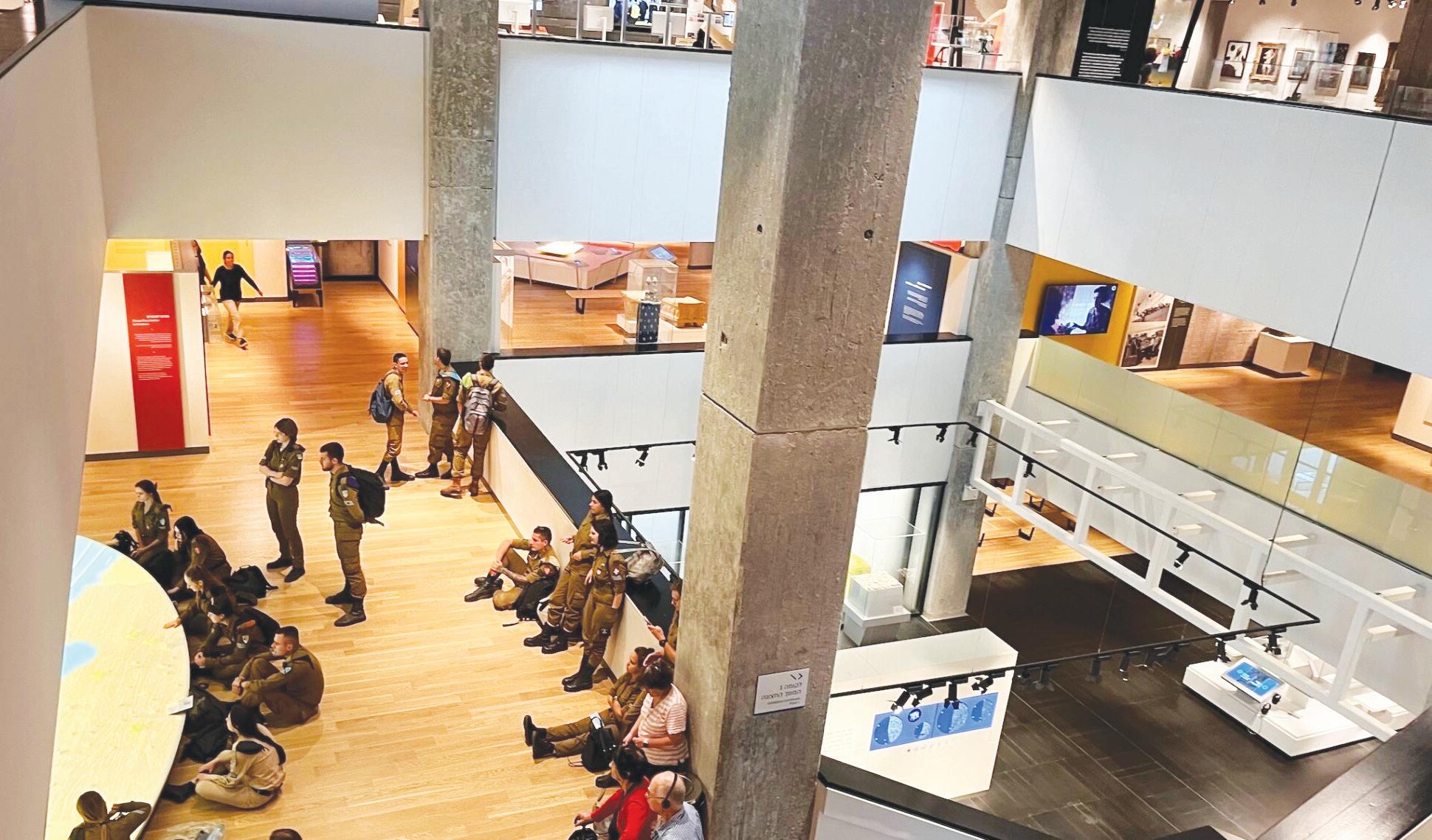
That history section was the least engaging to me, giving the vibe of an earnest middle school textbook trying a little too hard to make a long, twisting journey from Temple times to the present day palatable. I appreciated the balance the curators appeared to strike between the “lachrymose” school — Jewish history as a series of disasters — and the long periods of creativity, stability, and autonomy enjoyed by Jews from North Africa to Middle Europe. The exhibit also tries hard to restore women to the Jewish story: I counted at least four main displays centering women.
But Mosaic, subtitled Identity and Culture in Our Times, was to me the most engaging of the three main permanent exhibits, and the one that succeeds the most in transforming this from a “museum of the Diaspora” to
One highly symbolic corner celebrates Yiddish on the one hand, and the revival of Hebrew as a day-to-day language on the other. My arguments with Elli are a recapitulation of the tension these languages represent. Israel’s founding generation was seen to look down on Yiddish, partly out of the expediency of nation-building and partly out of a nonetoo-subtle disdain for the diasporic ways that Yiddish represented. The museum tackles this head on in one kiosk, asking Who Will Reign in Zion — Hebrew or Yiddish? and acknowledging how the debate often turned vicious and even violent.
There is also an animated film depicting Jewish literary, artistic, and music greats accompanied by a Hebrew rap song about their accomplishments. I found it a little ironic that they chose a rap song — perhaps the popular art form with the fewest successful Jewish makers (and yes, I am aware of Drake). Then again, it was in Hebrew, and that kind of cultural synthesis — and, OK, flat-out appropriation — is part of the Jewish mosaic as well.
Like any effort to cram so many arguments and information in a limited space, the Identity and Culture section could feel a little thin. And yet for this Diaspora Jew, it also felt validating. I didn’t feel chided for living in galut, nor defensive about regarding Israel as just one of many paths in the Jewish journey. In the history section, Israel, like the Holocaust, is treated in just one room, this time with wall-sized videos displaying highlights of the country’s 74-year history.
Elli said the museum played fair in its presentation of the global Jewish story. “It didn’t celebrate Zionism nor diss Zionism,” he told me. “It told that story within the context of the history of the Jewish people.” But when I goaded him and asked if that was satisfying, he dropped the gloves: “One can walk away thinking that there are so many more chapters to write about the future glory of Diaspora Jewry, when in fact the story is virtually over. It won’t survive the 21st century.”
I left thinking that if the museum has a Zionist agenda, it doesn’t need a wall label or “gate of return” to make its point. You only need to exit the museum and find yourself surrounded by buildings representing the life sciences, engineering, biotech, security studies, and “cereal crops improvement.” To catch the train back to Jerusalem, you walk along a bluff that offers a spectacular view of the high rises of Ramat Gan and downtown Tel Aviv.
And as you consider the present-day vitality or the nearly inconceivable accomplishments of the Jewish state, you think, “Touché, Israel. Touché.”
What is a Jew?
Israel’s renovated Diaspora museum attempts a 3-story answer.
‘I didn’t feel chided for living in galut, nor defensive about regarding Israel as just one of many paths in the Jewish journey.’
Joell Alter (J.J.), son of Betty Alter and the late Sid Alter, passed away June 3. After graduating The Ohio State University, he began his career in Dayton working for the Dayton Jewish Center. He then moved to Philadelphia, beginning his 20-plus years in the medical industry. He is survived by his sister, Jill; brothers, Mitchell (Linda) and Randall. He was the uncle of Mollie, Allie, Sophie, Max, and Sadie. He loved fashion, Broadway, dogs, and his many friends. And mostly his mother, Betty. A celebration of life will be held Sunday, July 10 from 3 to 5 p.m. at One Lincoln Park. He will live on in our hearts forever.

Howard M. Bender, age 64, passed away suddenly at his home in Glendale, Ariz. on May 28. Born in Dayton, he was the son of the late Annalee (nee Block) and Donald H. Bender. He attended Jefferson Elementary School, Colonel White High School, and was graduated from Fairview High School in 1974. He subsequently attended Washington University in St. Louis, and was graduated from University of Iowa in 1978 with a B.A. in political science and history. He earned an MBA from Roosevelt University in 1986. He lived most of his adulthood in Buffalo Grove, Ill., where he built his career at AGIA, and was an active volunteer and marathon runner for several causes. More recently, he and his family moved to Scottsdale. Howard was known for his personal integrity, diligence, willingness to help others, sly sense of humor, and devotion to his wife and children. He is survived by his wife of 41 years, Becky (nee Kramer); daughter and son-in-law, Ellen and Anton Akilov; and two grandchildren, Sarah and Michael of Scottsdale; son, Donald Bender of Detroit; and sister, Michelle Bender, of New York City. Interment was at Mt. Sinai Cemetery in Phoenix. Donations in Howard’s memory may be made to the Leukemia and Lymphoma Society, or to the American Heart Association.


Marcia E. Burick of Leeds, Mass. died peacefully in her sleep, June 4, after celebrating her 60th college reunion at Wellesley College surrounded by lifelong friends and classmates. She graduated from Wellesley College in 1962 with a major in political science. She was born in Dayton in 1940 to Simon and Rachel Burick. She graduated
from Fairview High School and was always connected to family and friends in Dayton. Upon graduation from Wellesley, Marcia was the recipient of two Mai Ling Soong prizes, which allowed her to attend a NATO youth conference in the south of France. She then joined the staff of the Press and Public Affairs Office of the U.S. Mission to the U.N., under the leadership of Amb. Adlai E. Stevenson in September 1962, just a few weeks before the Cuban Missile Crisis. She spent much of the next decade raising children, Ken and Dan, and embracing her new home in Northampton, where she moved to in 1968. Marcia became active in politics and community services. During that time, she was also working as a press director and speech writer for such organizations as Planned Parenthood of New York City, the Institute for International Education, The Fund for Peace and, occasionally, for the National Committee on U.S.-China Relations. She used to say that she drifted to the job of press officer for the visit of the Chinese Table Tennis Team to the United States in Spring 1972 after the National Committee, a non-governmental organization, asked the U.S. Table Team Association, then in China in Spring 1971 at the invitation of Premier Zhou En-Lai, to invite the Chinese team to make a return visit to the U.S. in 1972, the beginning of U.S.-China Relations. She traveled with the teams throughout the U.S. in April 1972. After moving to Northampton, she earned an M.A. in Urban Studies at Smith College and wrote her thesis on Hong Kong Resettlement Housing, having received the Mary Elvira Stevens Fellowship for Wellesley alumni for travel and research abroad.
In 1980 she became chief aide to the mayor of Northampton for a number of interesting years in local government and, during breaks, was able to organize and
conduct several tours of the world. Although she worked and traveled the world extensively, Northampton was her home. She was deeply involved and committed to the community, its people, and its institutions. She was a longtime and active member of Congregation B’nai Israel and was a staple at every political function. Her home in Fairway Village, Leeds was her home base and she entertained friends from all over the world and spent time with her close friends in the neighborhood.
She worked for many years, often under USIS or USAID auspices, consulting on social services or teaching government best practices in such places as the Baltics, Poland, Nigeria, Gaza, South Africa, and ran a program over several years for the Institute for Training and Development for government officials in Indonesia.
She is survived by her son Ken and daughter-in-law Amanda and her grandchildren Samantha and Nathaniel. She is also survived by hundreds of devoted friends locally and globally. Marcia was known for her incredible warmth and generosity and will be dearly missed by all. Her husband, Edward McColgan, passed away earlier this year. Her memory will be a blessing and her acts of kindness and good deeds will live on in this community and around the world. Contributions may be made to the Northampton Community Foundation.
Richard S. Levinson of Chestnut Hill, Mass., died peacefully of natural causes on May 19 at Kimball Farms Nursing Center in Lenox. Born in Dayton on Dec. 16, 1934, Richard (Dick) Levinson was the oldest son of Rose and Jule Levinson. He and his brothers Steve and Jim grew up in a close-knit

community, where his parents welcomed friends, family, and visitors to their home for meals and Jewish holidays. In high school, Richard worked at his family’s poultry business. He graduated as valedictorian of Fairview High School and earned degrees from Harvard College and Harvard Business School.
Richard married and raised three children, Jeff, Brian (Tony), and John, with his then wife Ann (now Stern). He worked many years for Binswanger Glass Co., served as president of a wallcovering manufacturer, and moved to Concord, Mass. where he co-owned the local print shop. He was conscientious in applying lessons learned from his early days in the family business about treating customers well — he especially enjoyed meeting new people who came into the shop in Concord. Richard acted in local theatre on the Concord, Arlington, and Maynard stages and was an active member of the Concord Rotary Club. Later in life, he met Phyllis Walt, and for over two decades they shared their love of music, opera, and hosting friends for meals and Scrabble.
Richard is remembered lovingly by Phyllis Walt, his brother James (Meredith), his sons Jeff (Lisa Gianelly), Brian/Tony (Rhonda), John (Renana Keynes), and his grandchildren William, Matthew, Joseph, Alexandra, Ayla, and Davi, as well as beloved Dayton family members. He was predeceased by his brother Steve (Rose).

The family would like to thank the staff at Kimball Farms for the care they provided.
The family will hold a memorial service for family and friends at a future date. A donation in celebration of Richard’s life can be made to a charity of your choice, or consider planting a tree in honor of his life.
Robert S. “Bob” Weinman, age 91, of Dayton, passed away June 8. He was born on Nov. 23, 1930, in Toledo to Harry and Ida Weinman. Bob was a proud graduate of the University of Toledo where he was a member of Alpha Epsilon Pi Fraternity and earned his bachelor’s and master’s degrees in education. Bob was a U.S. Army veteran and member of the Jewish War Veterans. Following his service, he pursued a career in education spanning over 30 years, during which he served as assistant superintendent for employee relations with Dayton Public Schools. In his retirement, he worked alongside his wife, the love of his life, in their homebased invitation and stationary business, By Invitation Only. Bob was a longtime member of Beth Abraham Synagogue, where he at one time served as vice president and treasurer. Bob was preceded in death by his beloved wife of 52 years, Retta. He is survived by his daughters and sons-in-law, Barbara (David) Shon of Dayton, Arlene (Herbert) Biel of Bethesda, Md.; grandchildren, Samuel (Sarah) Shon, Rachel Shon, Erin and Andrea Biel; and great-grandchildren, Olivia and Ava; sister, Rochelle Russell of Toledo; and several nieces and nephews. Interment was at Beth Abraham Cemetery. Memorial contributions may be made to The University of Toledo Foundation, Beth Abraham Synagogue, or the Hospice of Dayton in Bob’s memory. The family would like to thank The Laurels of Kettering and Hospice of Dayton for their care and support of Bob.

